It’s possible that I shall make an ass of myself. But in that case one can always get out of it with a little dialectic. I have, of course, so worded my proposition as to be right either way (K.Marx, Letter to F.Engels on the Indian Mutiny)
Sunday, March 08, 2020
Children aren't at great risk for coronavirus, WHO report says, but some doctors aren't so sure
Adrianna Rodriguez, USA TODAY•March 6, 2020
A report spearheaded by international public health leaders suggests that children aren’t particularly vulnerable to the coronavirus that so far has infected more than 95,000 people and killed more than 3,200 worldwide.
According to a report released last month by the Joint Mission and the World Health Organization-China, individuals under the age of 18 experience a “relatively low attack rate" of the virus, about 2.4%.
Scientists found the virus to be “relatively mild" among individuals under 19 years old, with only 2.5% of the reported cases developing into a severe disease and 0.2% developing into a critical disease, the report said. The Chinese Center for Disease Control and Prevention said in a Feb. 24 report that no children in China under the age of nine have died from the infection.
But some U.S. experts say the report, based on research from the team of health officials who visited virus hot spots in three Chinese provinces, may underestimate the infection rate among children.
Dr. John Williams, chief of pediatric infectious diseases at UPMC Children’s Hospital of Pittsburgh, said a lack of testing among patients with milder symptoms paints a crude picture of the infection.
"Many of us in the field suspect kids are only being found through tracing their sicker adults contacts, but if we were able to test lots of mild disease, we’d probably find that many children are infected," he said.
Williams said it's unlikely children would be less likely to be infected by the new coronavirus.
"There are no data to tell us how likely kids are to contract COVID-19 since almost all the testing is in hospitalized patients" and children are rarely hospitalized for the illness, he said.
Dr. Robert Frenck, medical director of the Division of Infectious Diseases at Cincinnati Children's Hospital Medical Center, agreed with Williams that too much is unknown about the virus to say definitively if children are less likely to be infected.
"The case definition for COVID-19 has been developed for more severe disease," he said. "So, at this time I don't think we know the likelihood of children becoming infected with COVID-19 and developing milder illnesses."
However, Dr. W. Garrett Hunt, a pediatric infectious diseases physician at Nationwide Children’s Hospital, said in an email to USA TODAY that the low infection rate among children seems to be consistent with what is know about MERS, SARS and other related coronaviruses that cause respiratory disease.
In China, human-to-human transmission of the COVID-19 is largely occurring within families, the Joint Mission-WHO findings suggested. Children in the city of Wuhan infected as of Feb. 24 were identified by tracing back to their households.
“Household transmission studies are currently underway, but preliminary studies ongoing in Guangdong (province) estimate the secondary attack rate in households ranges from 3%-10%,” the report said.
Frenck said such secondary infection is common among all respiratory viruses.
"Family spread of any respiratory virus is common due to the close and repeated contact within families," he said. It's also common to spread the virus by having contact with a contaminated surface, like a countertop.
Among the nearly 56,000 laboratory-confirmed cases reported as of Feb. 20, the median age of coronavirus infection is 51 years old with the majority of cases occurring between the ages of 30 to 69 years old.
The demographic with the highest risk for complications and death include people over 60 years old and those with underlying conditions such as hypertension, diabetes, cardiovascular disease, chronic respiratory disease and cancer.
Nevada high court defends Tahoe bear activists' free speech
Associated Press•March 8, 2020
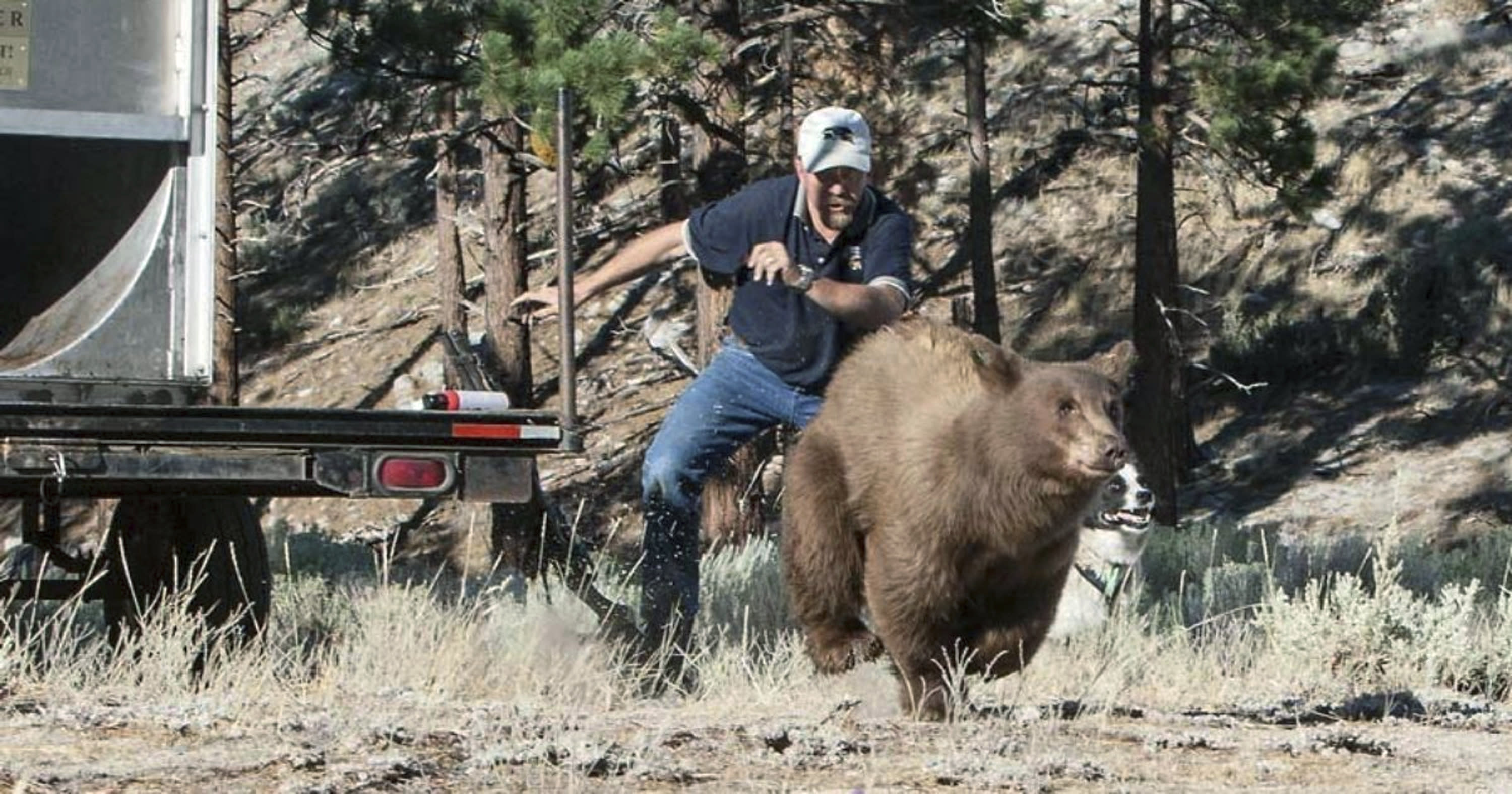
Tahoe Bear Dispute Free Speech
FILE - In this Aug. 9, 2013, file photo, provided by the Nevada Department of Wildlife, Carl Lackey, a long-time Nevada Department of Wildlife biologist, and a dog named ''Rooster'' chase after a California black bear after it was captured and re-released to the wild in the Carson Range southwest of Carson City, Nev. The Nevada Supreme Court says social media comments posted by bear protection activists at Lake Tahoe referring to the longtime state wildlife biologist as a murderer constitute "good faith communications" protected as free speech. The Reno Gazette Journal reports the recent opinion doesn't end a lawsuit that continues in Washoe County District Court. But it settles a key legal question in the dispute between Lackey and an activist at Lake Tahoe. (John Axtell/Nevada Department of Wildlife via AP, File)
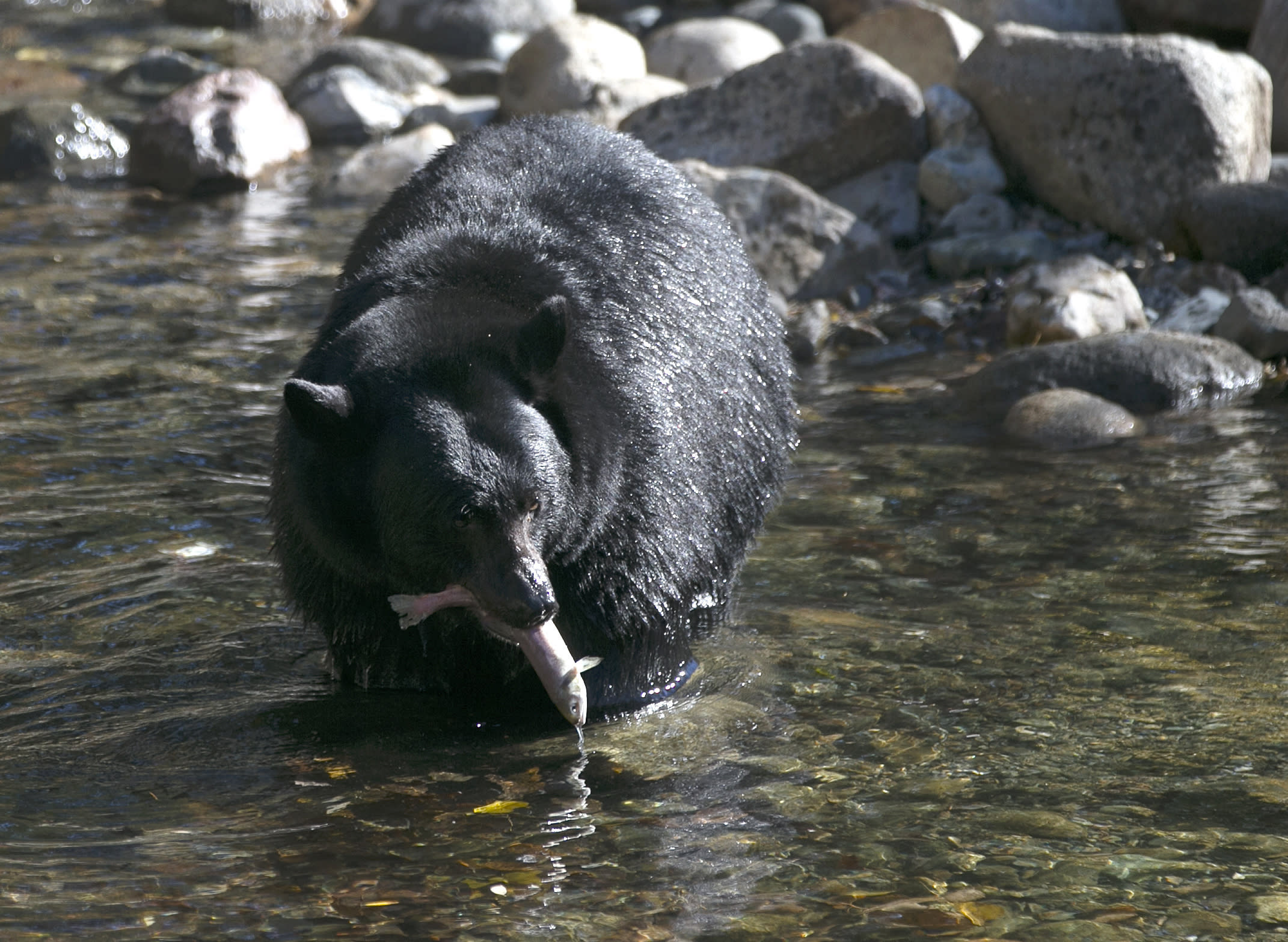
RENO, Nev. (AP) — Social media comments about protecting bears that were posted by Lake Tahoe activists referring to a longtime wildlife biologist as a murderer constitute “good faith communications” protected as free speech, the Nevada Supreme Court says.
The recent opinion doesn't end a lawsuit filed in Washoe County District Court in Reno.
But it settles a key legal question in the dispute between Carl Lackey, a Nevada Department of Wildlife biologist, and Carolyn Stark, who administers a Facebook page that posts criticism of the state’s bear control tactics, according to the Reno Gazette Journal.
The lawsuit is the latest development in a yearslong legal and public relations battle between the agency and a group of activists who oppose state methods for managing bears. In 2018, a judge issued a protective order to keep Stark, who lives in the community of Incline Village, away from another state biologist who says Stark stalked her in a dispute over the capture of nuisance bears.
The high court's opinion is a victory for Stark, who argued she was being unjustly targeted for her activism, and a setback for Lackey, who claims harm from the hostile posts.
“It is a free speech friendly ruling,” Patrick File, an assistant professor of media law at University of Nevada, Reno, told the newspaper.
Lackey, the state's point person dealing with conflicts between bears and people, filed a defamation lawsuit in 2017 against Stark, the Bear League activist group and two others. It accused them of mounting a “vicious and calculated effort to damage his reputation and jeopardize his employment."
Although the named defendants didn't necessarily write the Facebook posts, Lackey argued they're ultimately responsible for repeated comments that are false and “designed to incite public rage.”
The activists said their criticism of Lackey's trapping and occasional euthanizing of black bears was constitutionally protected free speech about a volatile public controversy. They maintain the bears have as much right to the woods as the tourists and the expansive summer homes that encroach on their native habitat in the Sierra Nevada.
Lackey long has blamed humans, not the bears, for the conflicts usually traced to people who fail to properly secure their garbage. For years, he's pushed unsuccessfully for ordinances mandating bear-proof trash bins to guard against the animals, which sometimes break into cars and homes — especially during drought years — to satisfy their daily caloric intake equivalent to 80 cheeseburgers.
Some of the Facebook posts were anonymous, but most carried names. The most inflammatory accused Lackey of “murdering" bears and suggested it was “maybe time for an assassination.” One posted Lackey's home address and said he should be jailed.
The Feb. 27 Supreme Court ruling overturns a Washoe County judge's decision on a motion filed by Stark.
Stark had argued Lackey's lawsuit should be dismissed based on a state law intended to discourage officials and other powerful people from shutting down critics by filing baseless lawsuits that drain their resources. The judge denied Stark's request.
Stark's appeal to the high court said the statements on the Facebook page were about matters of public concern.
“It is abundantly clear that Lackey has brought this suit against Stark to bully and intimidate Stark into removing her wildlife advocacy Facebook page because Lackey simply doesn’t like the viewpoint it presents,” her lawyer argued.
The Supreme Court concluded comments about Lackey and other officials were related to the public's interest in wildlife management.
"Just because the comment presented a hypothetical about Lackey's conduct, it does not follow that it was not directly related to the public interest," Justice James Hardesty wrote with concurrence from six other justices.
Hardesty said Stark's claims that her own posts were true and that she believed other people's posts were opinions or contained "substantial truth" constituted sufficient evidence that the "statements were truthful or made without knowledge of their falsehood.”
Associated Press•March 8, 2020

Tahoe Bear Dispute Free Speech
FILE - In this Aug. 9, 2013, file photo, provided by the Nevada Department of Wildlife, Carl Lackey, a long-time Nevada Department of Wildlife biologist, and a dog named ''Rooster'' chase after a California black bear after it was captured and re-released to the wild in the Carson Range southwest of Carson City, Nev. The Nevada Supreme Court says social media comments posted by bear protection activists at Lake Tahoe referring to the longtime state wildlife biologist as a murderer constitute "good faith communications" protected as free speech. The Reno Gazette Journal reports the recent opinion doesn't end a lawsuit that continues in Washoe County District Court. But it settles a key legal question in the dispute between Lackey and an activist at Lake Tahoe. (John Axtell/Nevada Department of Wildlife via AP, File)

Tahoe Bear Dispute Free Speech
FILE - In this Oct. 24, 2017, file photo, a Black Bear eats a Kokanee salmon it caught in the Taylor Creek in South Lake Tahoe, Calif. The Nevada Supreme Court says social media comments posted by bear protection activists at Lake Tahoe referring to a longtime state wildlife biologist as a murderer constitute "good faith communications" protected as free speech. The Reno Gazette Journal reports the recent opinion doesn't end a lawsuit that continues in Washoe County District Court. But it settles a key legal question in the dispute between Carl Lackey, a Nevada Department of Wildlife biologist, and Carolyn Stark, who administers a Facebook page that posts criticism of the state’s bear control tactics, according to the Reno Gazette Journal. (AP Photo/Rich Pedroncelli, File)
RENO, Nev. (AP) — Social media comments about protecting bears that were posted by Lake Tahoe activists referring to a longtime wildlife biologist as a murderer constitute “good faith communications” protected as free speech, the Nevada Supreme Court says.
The recent opinion doesn't end a lawsuit filed in Washoe County District Court in Reno.
But it settles a key legal question in the dispute between Carl Lackey, a Nevada Department of Wildlife biologist, and Carolyn Stark, who administers a Facebook page that posts criticism of the state’s bear control tactics, according to the Reno Gazette Journal.
The lawsuit is the latest development in a yearslong legal and public relations battle between the agency and a group of activists who oppose state methods for managing bears. In 2018, a judge issued a protective order to keep Stark, who lives in the community of Incline Village, away from another state biologist who says Stark stalked her in a dispute over the capture of nuisance bears.
The high court's opinion is a victory for Stark, who argued she was being unjustly targeted for her activism, and a setback for Lackey, who claims harm from the hostile posts.
“It is a free speech friendly ruling,” Patrick File, an assistant professor of media law at University of Nevada, Reno, told the newspaper.
Lackey, the state's point person dealing with conflicts between bears and people, filed a defamation lawsuit in 2017 against Stark, the Bear League activist group and two others. It accused them of mounting a “vicious and calculated effort to damage his reputation and jeopardize his employment."
Although the named defendants didn't necessarily write the Facebook posts, Lackey argued they're ultimately responsible for repeated comments that are false and “designed to incite public rage.”
The activists said their criticism of Lackey's trapping and occasional euthanizing of black bears was constitutionally protected free speech about a volatile public controversy. They maintain the bears have as much right to the woods as the tourists and the expansive summer homes that encroach on their native habitat in the Sierra Nevada.
Lackey long has blamed humans, not the bears, for the conflicts usually traced to people who fail to properly secure their garbage. For years, he's pushed unsuccessfully for ordinances mandating bear-proof trash bins to guard against the animals, which sometimes break into cars and homes — especially during drought years — to satisfy their daily caloric intake equivalent to 80 cheeseburgers.
Some of the Facebook posts were anonymous, but most carried names. The most inflammatory accused Lackey of “murdering" bears and suggested it was “maybe time for an assassination.” One posted Lackey's home address and said he should be jailed.
The Feb. 27 Supreme Court ruling overturns a Washoe County judge's decision on a motion filed by Stark.
Stark had argued Lackey's lawsuit should be dismissed based on a state law intended to discourage officials and other powerful people from shutting down critics by filing baseless lawsuits that drain their resources. The judge denied Stark's request.
Stark's appeal to the high court said the statements on the Facebook page were about matters of public concern.
“It is abundantly clear that Lackey has brought this suit against Stark to bully and intimidate Stark into removing her wildlife advocacy Facebook page because Lackey simply doesn’t like the viewpoint it presents,” her lawyer argued.
The Supreme Court concluded comments about Lackey and other officials were related to the public's interest in wildlife management.
"Just because the comment presented a hypothetical about Lackey's conduct, it does not follow that it was not directly related to the public interest," Justice James Hardesty wrote with concurrence from six other justices.
Hardesty said Stark's claims that her own posts were true and that she believed other people's posts were opinions or contained "substantial truth" constituted sufficient evidence that the "statements were truthful or made without knowledge of their falsehood.”
Trump 'Can't Bluff His Way Through' This Crisis, Slams Conservative News Site
Mary Papenfuss, HuffPost • March 8, 2020
Donald Trump is revealing how “deeply unsuited he is to deal with a genuine crisis that he can’t bluff his way through,” per an editorial published Sunday in the Washington Examiner, a conservative political news site and weekly magazine that often has the president’s back.
This time, the Examiner had a serious problem with the president’s deceitful approach to the coronavirus threat.
“It’s one thing for Trump to insist he had a ‘perfect’ phone call [to Ukraine] and have all his Republican minions fall in line. It’s another thing to downplay a growing epidemic as more and more Americans get sick,” wrote the Examiner’s executive editor Philip Klein.
Trump’s comments on Friday while touring the Centers for Disease Control and Prevention were particularly disturbing, the Examiner noted. Instead of making sober, steadying statements about the concrete steps being taken to protect Americans, Trump attacked CNN, called Washington Gov. Jay Inslee (D) a “snake” for criticizing the administration’s handling of a disease that has killed 14 people in Inslee’s state and asked about ratings for his Fox News town hall meeting.
Trump also claimed tests devised by the CDC were perfect and that anyone who needed one could get it, even though CDC and other federal officials revealed that early tests were flawed and demand for tests had outstripped supply.
Most stunning, Klein noted, was Trump’s reluctance to allow the passengers, including some 1,000 Americans, to leave the Grand Princess cruise ship, which is carrying nearly two dozen people who are sick with coronavirus, because it would increase the reported numbers of cases.
“Trump appears to be more concerned with numbers that might make him look bad in the short-term, then he is with actually taking the most prudent measures to save lives over time,” Klein wrote.
Trump has repeatedly insisted that the coronavirus threat is all but over, even as cases continued to mount. He also claimed that the 15 domestic cases reported last month would “go down close to zero.” As of Sunday, there were more than 500 cases — and 22 deaths.
“Trump will be judged on his handling of the spread of a virus,” Klein warned. “And the outcome will be clear no matter how many things he makes up, no matter how confident he pretends to be, and no matter how many insults he heaves.”
OPINION
Coronavirus is exposing Trump's unsuitability to handle a crisis
by Philip Klein | March 08, 2020

Mary Papenfuss, HuffPost • March 8, 2020
Donald Trump is revealing how “deeply unsuited he is to deal with a genuine crisis that he can’t bluff his way through,” per an editorial published Sunday in the Washington Examiner, a conservative political news site and weekly magazine that often has the president’s back.
This time, the Examiner had a serious problem with the president’s deceitful approach to the coronavirus threat.
“It’s one thing for Trump to insist he had a ‘perfect’ phone call [to Ukraine] and have all his Republican minions fall in line. It’s another thing to downplay a growing epidemic as more and more Americans get sick,” wrote the Examiner’s executive editor Philip Klein.
Trump’s comments on Friday while touring the Centers for Disease Control and Prevention were particularly disturbing, the Examiner noted. Instead of making sober, steadying statements about the concrete steps being taken to protect Americans, Trump attacked CNN, called Washington Gov. Jay Inslee (D) a “snake” for criticizing the administration’s handling of a disease that has killed 14 people in Inslee’s state and asked about ratings for his Fox News town hall meeting.
Trump also claimed tests devised by the CDC were perfect and that anyone who needed one could get it, even though CDC and other federal officials revealed that early tests were flawed and demand for tests had outstripped supply.
Most stunning, Klein noted, was Trump’s reluctance to allow the passengers, including some 1,000 Americans, to leave the Grand Princess cruise ship, which is carrying nearly two dozen people who are sick with coronavirus, because it would increase the reported numbers of cases.
“Trump appears to be more concerned with numbers that might make him look bad in the short-term, then he is with actually taking the most prudent measures to save lives over time,” Klein wrote.
Trump has repeatedly insisted that the coronavirus threat is all but over, even as cases continued to mount. He also claimed that the 15 domestic cases reported last month would “go down close to zero.” As of Sunday, there were more than 500 cases — and 22 deaths.
“Trump will be judged on his handling of the spread of a virus,” Klein warned. “And the outcome will be clear no matter how many things he makes up, no matter how confident he pretends to be, and no matter how many insults he heaves.”
OPINION
Coronavirus is exposing Trump's unsuitability to handle a crisis
by Philip Klein | March 08, 2020

Trump gives remarks after touring the CDC on March 6.
AP
President Trump’s bombastic style has served him well through many stages of his political career, but as the coronavirus spreads rapidly throughout the United States, it is exposing how deeply unsuited he is to deal with a genuine crisis that he can’t bluff his way through.
It’s one thing for Trump to insist he had a “perfect” phone call and have all his Republican minions fall in line. It’s another thing to downplay a growing epidemic as more and more Americans get sick.
On February 26th, Trump patted himself on the back for the relatively low number of cases in the U.S. “You have 15 people, and the 15, within a couple of days, is going to be down to close to zero, that’s a pretty good job we’ve done," he said. By March 5, he was tweeting that the U.S. had “only 129.” Just a day later, he said there were 240 cases, portraying this as a low number relative to the seasonal flu.
Sunday morning, he avoided stating any number in touting, “We have a perfectly coordinated and fine tuned plan at the White House for our attack on CoronaVirus. We moved VERY early to close borders to certain areas, which was a Godsend. V.P. is doing a great job. The Fake News Media is doing everything possible to make us look bad. Sad!”
Recommended For You
As of this writing, Johns Hopkins has tracked 428 cases in the U.S.
When Trump was elected, many of his critics feared that he could talk the U.S. into a nuclear war. Those fears have not been realized, as Trump has proven generally averse to military conflict, actually more averse than many of his predecessors. He’s also overcome a number of scandals through a combination of relentless attacks on the media and his political enemies, and overreach among his opponents in both camps. But this is something different. Trump will be judged on his handling of the spread of a virus. And the outcome will be clear no matter how many things he makes up, no matter how confident he pretends to be, and no matter how many insults he heaves.
If anybody was hoping that Trump had the ability to rise to the moment, his comments upon touring the Centers for Disease Control and Prevention should disabuse them of that notion.
Trump, speaking from the facility with a red “Keep America Great” campaign hat, found time to praise the ratings of his townhall interview on Fox News. He declared, “I don’t watch CNN because CNN is fake news.” He attacked Washington Gov. Jay Inslee, who is dealing with the most deadly coronavirus outbreak in the U.S., as a “snake.”
Dipping into the greatest hits from his impeachment defense, Trump said of the CDC tests that have run into significant problems, “the tests are all perfect, like the letter was perfect. The transcription was perfect, right? This was not as perfect as that, but pretty good.”
When it came to the matter of testing, Trump also lied, and revealed staggering ignorance. In the face of questions about the disastrously slow rollout of testing in the U.S., Trump insisted, “Anybody that wants a test can get a test. That’s what the bottom line is.”
That is not remotely true. There have been many stories of people’s futile efforts to try and get tested. Last Thursday, for instance, a registered nurse exhibiting symptoms in quarantine after having cared for a coronavirus patient, wrote of her difficulty obtaining a test even after it was okayed by a local health official.
Here in Washington, DC, where the first case was announced Saturday, health officials said they had the capacity to test 50 people a day. There is currently restrictive criteria for who can get tested.
South Korea, in contrast, has set up drive through centers, where individuals can get a sample taken in a few minutes without getting out of their cars, and get results back within a few days. This is exactly the sort of outside the box innovative solution that one would think a guy who ran as a practical businessman type would want to encourage or at least look into. Instead, Trump said “they’re not testing. They’re sampling people in other countries.”
When a reporter interjected that those samples are then being tested, Trump said, “No, no — excuse me, there’s a difference. I heard what he said. They’re sampling people. It’s a drive-by. They give samples. Now, can we do that? Yeah, we can do that, but that’s not effective like what we’re doing.”
The lack of adequate testing may be keeping the numbers of identified cases artificially low in the U.S., but they are also preventing public health officials from being able to identify areas of outbreak early enough to take steps to mitigate the spread. The more that we can make the spread of the virus more gradual, the easier it will be to make sure that we have enough medical capacity to treat the cases of those who require hospitalization. From what we saw in China, the fatality rate is heavily correlated with how overwhelmed the medical system becomes.
But the most stunning part of Trump’s press conference came when he said that, despite the recommendation of health officials, he was reluctant to let Americans off of a cruise ship with 21 infected, because it would increase the reported numbers of cases. He said he would defer to the vice president, and there is now news that the passengers will be let off.
Yet it was quite revealing into Trump’s thought process that he said, “I would rather — because I like the numbers being where they are. I don’t need to have the numbers double because of one ship. That wasn’t our fault, and it wasn’t the fault of the people on the ship, either.”
Trump appears to be more concerned with numbers that might make him look bad in the short-term, then he is with actually taking the most prudent measures to save lives over time.
The current crisis is revealing what many critics feared in a potential Trump presidency. He simply has not shown an ability to break out of his typical antics, and treat the moment with the seriousness with which it deserves.
AP
President Trump’s bombastic style has served him well through many stages of his political career, but as the coronavirus spreads rapidly throughout the United States, it is exposing how deeply unsuited he is to deal with a genuine crisis that he can’t bluff his way through.
It’s one thing for Trump to insist he had a “perfect” phone call and have all his Republican minions fall in line. It’s another thing to downplay a growing epidemic as more and more Americans get sick.
On February 26th, Trump patted himself on the back for the relatively low number of cases in the U.S. “You have 15 people, and the 15, within a couple of days, is going to be down to close to zero, that’s a pretty good job we’ve done," he said. By March 5, he was tweeting that the U.S. had “only 129.” Just a day later, he said there were 240 cases, portraying this as a low number relative to the seasonal flu.
Sunday morning, he avoided stating any number in touting, “We have a perfectly coordinated and fine tuned plan at the White House for our attack on CoronaVirus. We moved VERY early to close borders to certain areas, which was a Godsend. V.P. is doing a great job. The Fake News Media is doing everything possible to make us look bad. Sad!”
Recommended For You
As of this writing, Johns Hopkins has tracked 428 cases in the U.S.
When Trump was elected, many of his critics feared that he could talk the U.S. into a nuclear war. Those fears have not been realized, as Trump has proven generally averse to military conflict, actually more averse than many of his predecessors. He’s also overcome a number of scandals through a combination of relentless attacks on the media and his political enemies, and overreach among his opponents in both camps. But this is something different. Trump will be judged on his handling of the spread of a virus. And the outcome will be clear no matter how many things he makes up, no matter how confident he pretends to be, and no matter how many insults he heaves.
If anybody was hoping that Trump had the ability to rise to the moment, his comments upon touring the Centers for Disease Control and Prevention should disabuse them of that notion.
Trump, speaking from the facility with a red “Keep America Great” campaign hat, found time to praise the ratings of his townhall interview on Fox News. He declared, “I don’t watch CNN because CNN is fake news.” He attacked Washington Gov. Jay Inslee, who is dealing with the most deadly coronavirus outbreak in the U.S., as a “snake.”
Dipping into the greatest hits from his impeachment defense, Trump said of the CDC tests that have run into significant problems, “the tests are all perfect, like the letter was perfect. The transcription was perfect, right? This was not as perfect as that, but pretty good.”
When it came to the matter of testing, Trump also lied, and revealed staggering ignorance. In the face of questions about the disastrously slow rollout of testing in the U.S., Trump insisted, “Anybody that wants a test can get a test. That’s what the bottom line is.”
That is not remotely true. There have been many stories of people’s futile efforts to try and get tested. Last Thursday, for instance, a registered nurse exhibiting symptoms in quarantine after having cared for a coronavirus patient, wrote of her difficulty obtaining a test even after it was okayed by a local health official.
Here in Washington, DC, where the first case was announced Saturday, health officials said they had the capacity to test 50 people a day. There is currently restrictive criteria for who can get tested.
South Korea, in contrast, has set up drive through centers, where individuals can get a sample taken in a few minutes without getting out of their cars, and get results back within a few days. This is exactly the sort of outside the box innovative solution that one would think a guy who ran as a practical businessman type would want to encourage or at least look into. Instead, Trump said “they’re not testing. They’re sampling people in other countries.”
When a reporter interjected that those samples are then being tested, Trump said, “No, no — excuse me, there’s a difference. I heard what he said. They’re sampling people. It’s a drive-by. They give samples. Now, can we do that? Yeah, we can do that, but that’s not effective like what we’re doing.”
The lack of adequate testing may be keeping the numbers of identified cases artificially low in the U.S., but they are also preventing public health officials from being able to identify areas of outbreak early enough to take steps to mitigate the spread. The more that we can make the spread of the virus more gradual, the easier it will be to make sure that we have enough medical capacity to treat the cases of those who require hospitalization. From what we saw in China, the fatality rate is heavily correlated with how overwhelmed the medical system becomes.
But the most stunning part of Trump’s press conference came when he said that, despite the recommendation of health officials, he was reluctant to let Americans off of a cruise ship with 21 infected, because it would increase the reported numbers of cases. He said he would defer to the vice president, and there is now news that the passengers will be let off.
Yet it was quite revealing into Trump’s thought process that he said, “I would rather — because I like the numbers being where they are. I don’t need to have the numbers double because of one ship. That wasn’t our fault, and it wasn’t the fault of the people on the ship, either.”
Trump appears to be more concerned with numbers that might make him look bad in the short-term, then he is with actually taking the most prudent measures to save lives over time.
The current crisis is revealing what many critics feared in a potential Trump presidency. He simply has not shown an ability to break out of his typical antics, and treat the moment with the seriousness with which it deserves.
Climate crisis on back-burner as pandemic threat looms
Marlowe HOOD,AFP•March 8, 2020
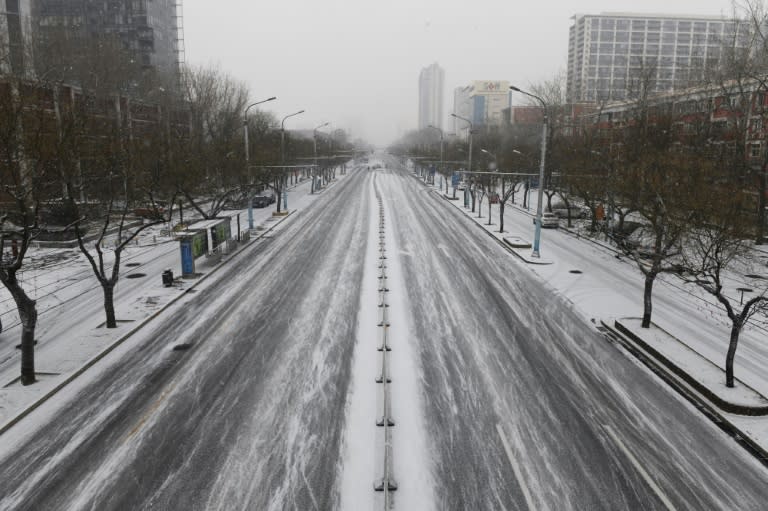
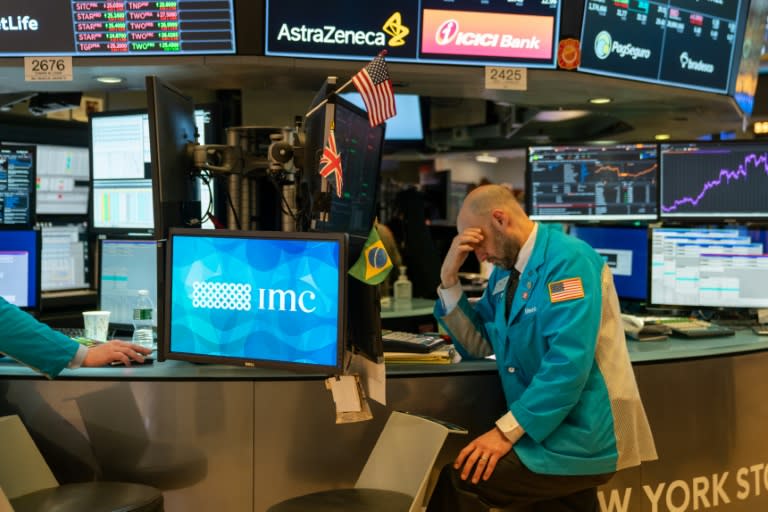
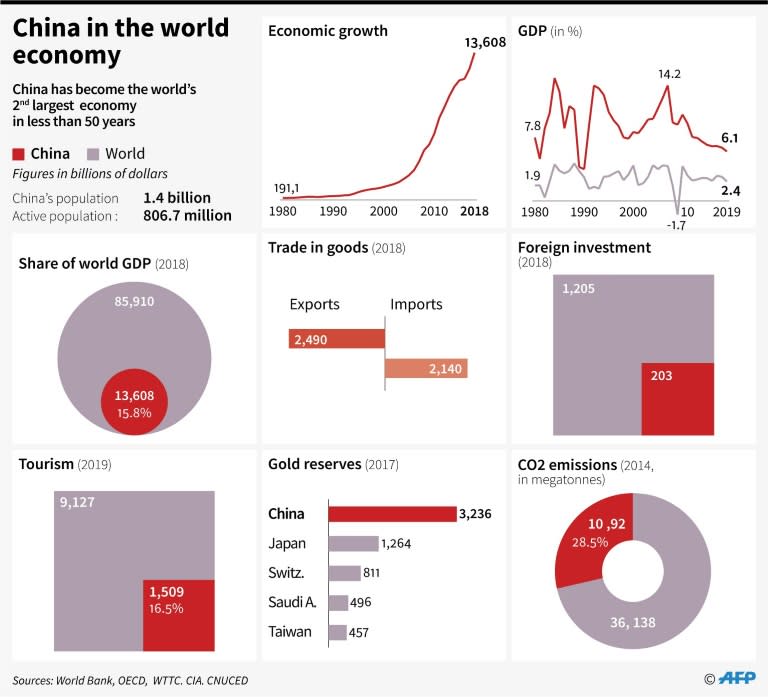
3 / 3
Any climate change benefits from the coronavirus outbreak are bound to be undone by what one analyst called "revenge emissions" (AFP Photo/GREG BAKER)
Paris (AFP) - Economic shock waves from the coronavirus outbreak have curbed carbon pollution from China and beyond, but hopes for climate benefits from the slowdown are likely to be dashed quickly, experts say.
As governments prepare to spend their way out of the crisis, including with large infrastructure projects, global warming concerns will be little more than an afterthought, dwarfed by a drive to prop up a stuttering world economy, they say.
Preparations for a make-or-break climate summit in November are already off track, with host Britain focused on its Brexit transition, and the challenge to its health system of the gathering epidemic.
Like an unintended lab experiment, the global health emergency demonstrates the cause-and-effect relationship that drives global warming.
In the four weeks up to March 1, China's discharge of CO2 fell 200 million tonnes, or 25 percent, compared to the same period last year, according to the Centre for Research on Energy and Clean Air (CREA) -- equivalent to annual CO2 emissions from Argentina, Egypt or Vietnam.
As the country's economy slowed to a crawl, coal consumption at power plants in China declined by 36 percent, and the use of oil at refineries by nearly as much.
Other major economies are bound to sputter too.
The outbreak has already drained stock markets of $9 trillion in value, and could end up costing the global economy up to $2.7 trillion, according to Bloomberg Economics.
"When you turn off the global fossil fuel economy, greenhouse gas emissions go down, air quality improves," said Jon Erickson, a professor of sustainability science and policy at the University of Vermont.
But any climate silver lining will be short-lived, experts warn.
"The emissions reductions we see now because of the epidemic are temporary, not structural," said Imperial College London's Joeri Rogelj, a lead scientist on the UN's climate science advisory panel, the IPCC.
- Lock-step -
"If anything, it makes mitigation efforts harder, because it reduces our resources to invest in the transformations needed for climate change protection."
There are already signs that Beijing -- impatient to reboot China's economy -- will rain down cash on carbon-intensive infrastructure projects, as happened after the global recession in 2008, and again in 2015.
"Initial announcements of stimulus have had no environmental emphasis whatsoever," noted Lauri Myllyvirta, lead analyst at CREA.
Proposals to further loosen controls on new coal power plants show that concerns about debt and emissions are being brushed aside, he told AFP.
"A round of cheap credits and a blind eye to inefficient polluting industries will lead to 'retaliatory emissions', setting China back on the goal of enhancing its climate targets," said Li Shuo, a climate policy analyst with Greenpeace East Asia.
A surge in state-directed capital spending a decade ago slowed China's clean-energy transition and amplified the horrendous pollution episodes in the winter of 2012/13.
Globally, CO2 emissions in 2010 from fossil-fuel combustion grew nearly six percent, more than offsetting the modest decrease the year before, notes Glen Peters, a scientist at the Center for International Climate and Environmental Research.
The coronavirus fallout highlights how hard it will be to reach the Paris Agreement temperature targets of capping global warming at under two degrees Celsius from pre-industrial levels, and 1.5C if feasible.
Earth's surface has already warmed more than one degree.
To turn a corner, the world needs a combination of growing GDP and falling CO2 emissions -- but historically growth and emissions have moved in lock-step.
IMF head Kristalina Georgieva predicts the coronavirus will knock at least half a percentage point off projected global GDP growth in 2020, originally forecast at 3.3 percent.
The UN, meanwhile, has said that CO2 emissions must drop eight percent annually over the next decade to meet the 1.5C Paris goal, and by about three percent per year to hold the line at 2C.
Experts say only a sustained global economic meltdown -- or an internationally coordinated, war-footing transition to a carbon neutral economy -- could come close to slashing carbon pollution that quickly. One is as unpalatable as the other is unlikely.
- 'Fossil-fuel train' -
But so far only the electricity sector has seen a -- very modest -- decoupling of emissions and economic growth.
"I'm sure the global economy will get back on the fossil-fuel train as soon as it possibly can," said Erickson of the University of Vermont.
As for the upcoming COP26 climate summit in Glasgow, the kind of non-stop shuttle diplomacy carried out by France for nearly two years ahead of the successful 2015 Paris talks is not happening, analysts say.
China -- the world's largest carbon polluter with 29 percent of global emissions -- also has a crucial role to play, but is likely to be distracted.
"There is a risk that the main objective for Beijing will be the resolution of its health crisis," predicted Sebastien Treyer, director of the Institute for Sustainable Development and International Relations in Paris.
Last week Preliminary UN climate meetings in Bonn and Kampala were cancelled or postponed.
Marlowe HOOD,AFP•March 8, 2020



3 / 3
Any climate change benefits from the coronavirus outbreak are bound to be undone by what one analyst called "revenge emissions" (AFP Photo/GREG BAKER)
Paris (AFP) - Economic shock waves from the coronavirus outbreak have curbed carbon pollution from China and beyond, but hopes for climate benefits from the slowdown are likely to be dashed quickly, experts say.
As governments prepare to spend their way out of the crisis, including with large infrastructure projects, global warming concerns will be little more than an afterthought, dwarfed by a drive to prop up a stuttering world economy, they say.
Preparations for a make-or-break climate summit in November are already off track, with host Britain focused on its Brexit transition, and the challenge to its health system of the gathering epidemic.
Like an unintended lab experiment, the global health emergency demonstrates the cause-and-effect relationship that drives global warming.
In the four weeks up to March 1, China's discharge of CO2 fell 200 million tonnes, or 25 percent, compared to the same period last year, according to the Centre for Research on Energy and Clean Air (CREA) -- equivalent to annual CO2 emissions from Argentina, Egypt or Vietnam.
As the country's economy slowed to a crawl, coal consumption at power plants in China declined by 36 percent, and the use of oil at refineries by nearly as much.
Other major economies are bound to sputter too.
The outbreak has already drained stock markets of $9 trillion in value, and could end up costing the global economy up to $2.7 trillion, according to Bloomberg Economics.
"When you turn off the global fossil fuel economy, greenhouse gas emissions go down, air quality improves," said Jon Erickson, a professor of sustainability science and policy at the University of Vermont.
But any climate silver lining will be short-lived, experts warn.
"The emissions reductions we see now because of the epidemic are temporary, not structural," said Imperial College London's Joeri Rogelj, a lead scientist on the UN's climate science advisory panel, the IPCC.
- Lock-step -
"If anything, it makes mitigation efforts harder, because it reduces our resources to invest in the transformations needed for climate change protection."
There are already signs that Beijing -- impatient to reboot China's economy -- will rain down cash on carbon-intensive infrastructure projects, as happened after the global recession in 2008, and again in 2015.
"Initial announcements of stimulus have had no environmental emphasis whatsoever," noted Lauri Myllyvirta, lead analyst at CREA.
Proposals to further loosen controls on new coal power plants show that concerns about debt and emissions are being brushed aside, he told AFP.
"A round of cheap credits and a blind eye to inefficient polluting industries will lead to 'retaliatory emissions', setting China back on the goal of enhancing its climate targets," said Li Shuo, a climate policy analyst with Greenpeace East Asia.
A surge in state-directed capital spending a decade ago slowed China's clean-energy transition and amplified the horrendous pollution episodes in the winter of 2012/13.
Globally, CO2 emissions in 2010 from fossil-fuel combustion grew nearly six percent, more than offsetting the modest decrease the year before, notes Glen Peters, a scientist at the Center for International Climate and Environmental Research.
The coronavirus fallout highlights how hard it will be to reach the Paris Agreement temperature targets of capping global warming at under two degrees Celsius from pre-industrial levels, and 1.5C if feasible.
Earth's surface has already warmed more than one degree.
To turn a corner, the world needs a combination of growing GDP and falling CO2 emissions -- but historically growth and emissions have moved in lock-step.
IMF head Kristalina Georgieva predicts the coronavirus will knock at least half a percentage point off projected global GDP growth in 2020, originally forecast at 3.3 percent.
The UN, meanwhile, has said that CO2 emissions must drop eight percent annually over the next decade to meet the 1.5C Paris goal, and by about three percent per year to hold the line at 2C.
Experts say only a sustained global economic meltdown -- or an internationally coordinated, war-footing transition to a carbon neutral economy -- could come close to slashing carbon pollution that quickly. One is as unpalatable as the other is unlikely.
- 'Fossil-fuel train' -
But so far only the electricity sector has seen a -- very modest -- decoupling of emissions and economic growth.
"I'm sure the global economy will get back on the fossil-fuel train as soon as it possibly can," said Erickson of the University of Vermont.
As for the upcoming COP26 climate summit in Glasgow, the kind of non-stop shuttle diplomacy carried out by France for nearly two years ahead of the successful 2015 Paris talks is not happening, analysts say.
China -- the world's largest carbon polluter with 29 percent of global emissions -- also has a crucial role to play, but is likely to be distracted.
"There is a risk that the main objective for Beijing will be the resolution of its health crisis," predicted Sebastien Treyer, director of the Institute for Sustainable Development and International Relations in Paris.
Last week Preliminary UN climate meetings in Bonn and Kampala were cancelled or postponed.
HERSTORY
Emeli Sande says climate crisis is having a disproportionate impact on women
Sarah Young The Independent March 8, 2020

Women are disproportionately affected by the climate crisis, Emeli Sande has said.
The Scottish singer, who took part in the #March4Women event campaigning for climate justice and gender equality on International Women’s Day, opened up about the impact the climate crisis had on her family in Zambia.
“I have a lot of family over there, all my dad’s family are in Zambia, and just over the past year I’ve been reading about how the climate crisis has really been affecting lot of sub-Saharan African countries, Zambia included in that,” Sande said.
“And often it’s the women who are already (victims of) social injustice and are already up against so much, that are being left completely vulnerable in this crisis.”
Sande added she wanted to raise awareness of the situations people like her family are facing as a result of climate change.
“I think more people should be aware of it,” she said. “My family are a farming family so this year has been quite difficult in terms of harvest and I think they are experiencing more droughts than usual and it’s just so unfair that countries that are least affecting global warming are being affected the worst.”
Sande described online movements which bring people together, such as #March4Women and #MeToo, as wonderful.
“I think just having all the women together and us all being able to communicate and network with one another and show physical presence and really demand what we think is fair, I think it’s so essential that we can do that and it goes beyond just one day,” she explained.
“There are so many appalling injustices that women face around the world and just kind of raising my voice for this day is wonderful and then if we can echo that throughout the year it would be really powerful.”
On Sunday, the climate change protests continued with topless activists from Extinction Rebellion blocking Waterloo Bridge.
The group of 31 women formed a human chain across the bridge to “highlight the disproportionate impact of the climate and ecological emergency on women”.
@emelisande singing for #March4Women – Read All About It pic.twitter.com/qgwgqpSzzK
— Frances Longley (@frances_longley)March 8, 2020
A spokesperson for Extinction Rebellion said: “A January 2020 report by the International Union for the Conservation of Nature found that climate breakdown and environmental degradation are driving an increase in violence against women.”
“The report found that deforestation and the degradation of land mean women have to travel further to collect the things they need, like firewood, and are exposed to violence, rape and abduction when they make these journeys. UN figures indicate that 80 per cent of people displaced by climate change are women.”
Emeli Sande says climate crisis is having a disproportionate impact on women
Sarah Young The Independent March 8, 2020

Women are disproportionately affected by the climate crisis, Emeli Sande has said.
The Scottish singer, who took part in the #March4Women event campaigning for climate justice and gender equality on International Women’s Day, opened up about the impact the climate crisis had on her family in Zambia.
“I have a lot of family over there, all my dad’s family are in Zambia, and just over the past year I’ve been reading about how the climate crisis has really been affecting lot of sub-Saharan African countries, Zambia included in that,” Sande said.
“And often it’s the women who are already (victims of) social injustice and are already up against so much, that are being left completely vulnerable in this crisis.”
Sande added she wanted to raise awareness of the situations people like her family are facing as a result of climate change.
“I think more people should be aware of it,” she said. “My family are a farming family so this year has been quite difficult in terms of harvest and I think they are experiencing more droughts than usual and it’s just so unfair that countries that are least affecting global warming are being affected the worst.”
Sande described online movements which bring people together, such as #March4Women and #MeToo, as wonderful.
“I think just having all the women together and us all being able to communicate and network with one another and show physical presence and really demand what we think is fair, I think it’s so essential that we can do that and it goes beyond just one day,” she explained.
“There are so many appalling injustices that women face around the world and just kind of raising my voice for this day is wonderful and then if we can echo that throughout the year it would be really powerful.”
On Sunday, the climate change protests continued with topless activists from Extinction Rebellion blocking Waterloo Bridge.
The group of 31 women formed a human chain across the bridge to “highlight the disproportionate impact of the climate and ecological emergency on women”.
@emelisande singing for #March4Women – Read All About It pic.twitter.com/qgwgqpSzzK
— Frances Longley (@frances_longley)March 8, 2020
A spokesperson for Extinction Rebellion said: “A January 2020 report by the International Union for the Conservation of Nature found that climate breakdown and environmental degradation are driving an increase in violence against women.”
“The report found that deforestation and the degradation of land mean women have to travel further to collect the things they need, like firewood, and are exposed to violence, rape and abduction when they make these journeys. UN figures indicate that 80 per cent of people displaced by climate change are women.”
HERSTORY
Huge turnout, some violence at Latin America Women's Day marches
By Natalia A. Ramos Miranda
and Daina Beth Solomon












International Women's Day in Santiago
By Natalia A. Ramos Miranda and Daina Beth Solomon
SANTIAGO/MEXICO CITY (Reuters) - Hundreds of thousands of women across Latin America's biggest cities flocked to the streets for International Women's Day on Sunday, with anger over inequality, femicide and strict abortion controls boiling over into sporadic violence.
As Women's Day events unfolded worldwide, with women donning purple to symbolize feminism, the Latin American marches were set against a backdrop of broader social unrest in the region.
Police said 150,000 protesters gathered in Chile's capital of Santiago, and another 40,000 marched elsewhere in the country. Many carried signs calling for access to abortion and an end to violence against women. Organizers said the number of protesters was much higher.
"We are a generation of women that has woken up. We are not afraid to speak out and struggle," protester Valentina Navarro, 21, told Reuters while marching in Santiago. She and a group of friends accompanying her had green bandannas around their necks, a symbol of support for abortion rights.
Incidents of violence were reported as demonstrators confronted police near government offices. Nineteen police were injured, authorities said, and 16 people arrested in the disturbances. Other Chilean cities saw protests as well, with 1,700 police officers deployed nationwide for crowd control.
Broader protests in Chile against social inequality began last October and at their peak included more than 1 million people.
In Mexico's capital, police and protest groups said up to 80,000 people gathered, including young girls and women in wheelchairs, for a march in which they hoisted signs and shouted chants against femicides, which have more than doubled over the last five years.
Miriam Hernandez, 42, a preschool teacher in Mexico state, wiped away tears as she watched thousands of people fill Mexico's biggest public square, recalling the recent morning when she was nearly kidnapped while walking to work.
"I fought and fought and then I ran," she said. "I want more security, I want me and my daughters to always leave the house and know we're going to return home."
Groups of women clashed outside Mexico City's main cathedral with male anti-abortion protesters, some with shaved heads and making Nazi salutes. Women activists threw Molotov cocktails at the doors of the National Palace.
Outside another historic building, protesters in black masks tore down a metal barricade put up to protect a monument, then sprayed the towering statue in pink and purple paint. Elsewhere, protesters overturned a vehicle and sprayed it with graffiti.
Some women said they felt compelled to attend their first march to act as voices for women who have been killed, and because they felt the government didn't grasp the gravity of the problem.
"The situation has gotten out of control... we have to march for those who no longer can," said Daniela Molinero, 29, a jewelry shop owner who wore a purple bandana and eye liner.
In Brazil's Sao Paulo, about a thousand women turned out, according to police estimates, with many protesting right-wing President Jair Bolsonaro, who came under criticism for comments he made about two female reporters.
Protesters also targeted violence against women in Brazil, where four women were killed a day in 2019, according to the Inter-American Commission on Human Rights.
Many marchers in Colombia's capital Bogota carried placards in support of safe and freely available abortion services. The country's Constitutional Court this month upheld limits which restrict abortion to cases of sexual assault, fetal deformity or maternal health risks.
Women's Day in Argentina lands just over three months into the new administration, which has announced plans to create a minister for women and support a fresh effort to legalize abortion after previous attempts were defeated in Congress.
Women in Buenos Aires planned to hold work stoppages on Monday in support of equal pay and legislation aimed at fighting violence against women and lowering impediments to abortion.
(Reporting by Daina Beth Solomon and Stefanie Eschenbacher in Mexico City, Natalia Ramos in Santiago, Eliana Raszewski in Buenos Aires, Julia Cobb in Bogota, and Tatiana Bautzer in Sao Paulo; Writing by Hugh Bronstein; Editing by Lisa Shumaker, Daniel Wallis, Diane Craft and Jane Wardell)
HERSTORY
'Even men now cheer me on': Kabul women sell burgers in solar-powered foodcarts
By Hameed Farzad Reuters March 7, 2020
KABUL (Reuters) - On a sunny weekend in Kabul, 30-year-old Maryam Mohammdi drives a solar-powered rickshaw around a city suburb, selling burgers to hungry customers as part of a business that is employing dozens of women in a traditionally male-dominated profession.
Mohammdi, who wears a chador, or long flowing black robe with a head and face covering, said that she initially drew pointed remarks when she started her job.
"People were making fun of me and laughing, saying: 'look at her, she is working on the street', but now the situation is getting better and people are encouraging me on a lot," she said. "Even men now cheer me on and say our food is delicious and healthy."
The business was started in 2018 by 27-year old Farhad Wajdi, who was born in a refugee camp in Pakistan, and now employs 50 women running 25 food carts in Kabul. He hopes to expand to 100 carts this year.
"When I returned to Afghanistan...I saw women were treated really badly, they were not allowed to do businesses, they were not allowed to take financial independence, they were socially excluded from socioeconomic opportunities," he said.
"For me it was a triggering point that I started working for Afghan women, because I see Afghan women as a big human resource that should be... equipped with skills and knowledge so they can make an equal contribution in the economic development of Afghanistan."
Like many, Mohammdi expressed concern about a possible return to power by the hardline Islamist Taliban, who banned women from education, work or leaving the house without a male relative during their 1996-2001 rule. The Taliban, with whom the United States signed a troop withdrawal agreement last week, say they have changed and will allow women to work.
"This job is essential to us...in my opinion, the Taliban should not interfere in the work of women because there is no difference between men and women, and everyone can work to advance life," she said.
Twenty-one-year-old Benazir Mosawi, who stopped to order a burger from Mohammdi, agreed with her sentiment.
"When I first saw this lady working and selling burgers, I was so happy...Afghan women need to stand on their own and solve their problems independently."
'Even men now cheer me on': Kabul women sell burgers in solar-powered foodcarts
By Hameed Farzad Reuters March 7, 2020
KABUL (Reuters) - On a sunny weekend in Kabul, 30-year-old Maryam Mohammdi drives a solar-powered rickshaw around a city suburb, selling burgers to hungry customers as part of a business that is employing dozens of women in a traditionally male-dominated profession.
Mohammdi, who wears a chador, or long flowing black robe with a head and face covering, said that she initially drew pointed remarks when she started her job.
"People were making fun of me and laughing, saying: 'look at her, she is working on the street', but now the situation is getting better and people are encouraging me on a lot," she said. "Even men now cheer me on and say our food is delicious and healthy."
The business was started in 2018 by 27-year old Farhad Wajdi, who was born in a refugee camp in Pakistan, and now employs 50 women running 25 food carts in Kabul. He hopes to expand to 100 carts this year.
"When I returned to Afghanistan...I saw women were treated really badly, they were not allowed to do businesses, they were not allowed to take financial independence, they were socially excluded from socioeconomic opportunities," he said.
"For me it was a triggering point that I started working for Afghan women, because I see Afghan women as a big human resource that should be... equipped with skills and knowledge so they can make an equal contribution in the economic development of Afghanistan."
Like many, Mohammdi expressed concern about a possible return to power by the hardline Islamist Taliban, who banned women from education, work or leaving the house without a male relative during their 1996-2001 rule. The Taliban, with whom the United States signed a troop withdrawal agreement last week, say they have changed and will allow women to work.
"This job is essential to us...in my opinion, the Taliban should not interfere in the work of women because there is no difference between men and women, and everyone can work to advance life," she said.
Twenty-one-year-old Benazir Mosawi, who stopped to order a burger from Mohammdi, agreed with her sentiment.
"When I first saw this lady working and selling burgers, I was so happy...Afghan women need to stand on their own and solve their problems independently."
---30---
Deadly viruses are no match for plain, old soap — here’s the science behind it
Published: March 8, 2020 By Palli Thordarson
Soap works better than alcohol and disinfectants at destroying the structure of viruses
This is how soap removes dirt, and bacteria, from the skin. Palli Thordarson
Why does soap work so well on the new coronavirus and, indeed, most viruses? Because it is a self-assembled nanoparticle in which the weakest link is the lipid (fatty) bilayer.
That sounds scientific. Let me explain.
Soap dissolves the fat membrane, and the virus falls apart like a house of cards and “dies,” or rather, it becomes inactive as viruses aren’t really alive. Viruses can be active outside the body for hours, even days.
Disinfectants, or liquids, wipes, gels and creams containing alcohol (and soap) have a similar effect but are not as good as regular soap. Apart from alcohol and soap, antibacterial agents in those products don’t affect the virus structure much. Consequently, many antibacterial products are basically just an expensive version of soap in how they act on viruses. Soap is the best, but alcohol wipes are good when soap is not practical or handy, for example in office reception areas.
Soap outcompetes the interactions between the virus and the skin surface, and the virus gets detached and falls apart like a house of cards.
Supramolecular chemistry
But why, exactly, is soap so good? To explain that, I will take you through a journey of supramolecular chemistry, nanoscience and virology. I will try to explain this in generic terms, which means leaving out special chemistry terms. (I must point out that, while I am an expert in supramolecular chemistry and the assembly of nanoparticles, I am not a virologist.)
Published: March 8, 2020 By Palli Thordarson
Soap works better than alcohol and disinfectants at destroying the structure of viruses
This is how soap removes dirt, and bacteria, from the skin. Palli Thordarson
Why does soap work so well on the new coronavirus and, indeed, most viruses? Because it is a self-assembled nanoparticle in which the weakest link is the lipid (fatty) bilayer.
That sounds scientific. Let me explain.
Soap dissolves the fat membrane, and the virus falls apart like a house of cards and “dies,” or rather, it becomes inactive as viruses aren’t really alive. Viruses can be active outside the body for hours, even days.
Disinfectants, or liquids, wipes, gels and creams containing alcohol (and soap) have a similar effect but are not as good as regular soap. Apart from alcohol and soap, antibacterial agents in those products don’t affect the virus structure much. Consequently, many antibacterial products are basically just an expensive version of soap in how they act on viruses. Soap is the best, but alcohol wipes are good when soap is not practical or handy, for example in office reception areas.
Soap outcompetes the interactions between the virus and the skin surface, and the virus gets detached and falls apart like a house of cards.
Supramolecular chemistry
But why, exactly, is soap so good? To explain that, I will take you through a journey of supramolecular chemistry, nanoscience and virology. I will try to explain this in generic terms, which means leaving out special chemistry terms. (I must point out that, while I am an expert in supramolecular chemistry and the assembly of nanoparticles, I am not a virologist.)
I have always been fascinated by viruses, as I see them as one of them most spectacular examples of how supramolecular chemistry and nanoscience converge.
Most viruses consist of three key building blocks: RNA, proteins and lipids.The RNA is the viral genetic material — it is similar to DNA. The proteins have several roles, including breaking into the target cell, assisting with virus replication and basically being a key building block (like a brick in a house) in the virus structure.
The lipids then form a coat around the virus, both for protection and to assist with its spread and cellular invasion. The RNA, proteins and lipids self-assemble to form the virus. Critically, there are no strong “covalent” bonds holding these units together.
Instead, the viral self-assembly is based on weak “non-covalent” interactions between the proteins, RNA and lipids. Together, these act together like Velcro, so it is hard to break up the self-assembled viral particle. Still, we can do it — with soap!
Most viruses, including the coronavirus, are between 50-200 nanometers — so they truly are nanoparticles. Nanoparticles have complex interactions with surfaces they are on; it’s the same with viruses. Skin, steel, timber, fabric, paint and porcelain are very different surfaces.
When a virus invades a cell, the RNA “hijacks” the cellular machinery like a computer virus and forces the cell to make fresh copies of its own RNA and the various proteins that make up the virus.
These new RNA and protein molecules self-assemble with lipids (readily present in the cell) to form new copies of the virus. That is, the virus does not photocopy itself; it makes copies of the building blocks, which then self-assemble into new viruses.
All those new viruses eventually overwhelm the cell, and it dies or explodes, releasing viruses that then go on to infect more cells. In the lungs, viruses end up in the airways and mucous membranes.
When you cough, or especially when you sneeze, tiny droplets from the airways can fly up to 30 feet. The larger ones are thought to be main coronavirus carriers, and they can go at least 7 feet. So, cover your coughs and sneezes!
Skin is an ideal surface for viruses
These tiny droplets end up on surfaces and dry out quickly. But the viruses are still active. What happens next is all about supramolecular chemistry and how self-assembled nanoparticles (like the viruses) interact with their environment.
Now it is time to introduce a powerful supramolecular chemistry concept that effectively says: Similar molecules appear to interact more strongly with each other than dissimilar ones. Wood, fabric and skin interact fairly strongly with viruses.
Contrast this with steel, porcelain and at least some plastics, such as Teflon. The surface structure also matters. The flatter the surface, the less the virus will “stick” to the surface. Rougher surfaces can actually pull the virus apart.
So why are surfaces different? The virus is held together by a combination of hydrogen bonds (like those in water) and hydrophilic, or “fat-like,” interactions. The surface of fibers or wood, for instance, can form a lot of hydrogen bonds with the virus.
In contrast, steel, porcelain or Teflon do not form much of a hydrogen bond with the virus. So the virus is not strongly bound to those surfaces and is quite stable.
For how long does the virus stay active? It depends. The novel coronavirus is thought to stay active on favorable surfaces for hours, possibly a day. What makes the virus less stable? Moisture (“dissolves”), sunlight (UV light) and heat (molecular motions).
The skin is an ideal surface for a virus. It is organic, of course, and the proteins and fatty acids in the dead cells on the surface interact with the virus through both hydrogen bonds and the “fat-like” hydrophilic interactions.
So when you touch a steel surface with a virus particle on it, it will stick to your skin and, hence, get transferred on to your hands. But you are not (yet) infected. If you touch your face, though, the virus can get transferred.
And now the virus is dangerously close to the airways and the mucus-type membranes in and around your mouth and eyes. So the virus can get in and — voila! — you are infected. That is, unless your immune system kills the virus.
If the virus is on your hands, you can pass it on by shaking someone’s else hand. Kisses, well, that’s pretty obvious. It goes without saying that if someone sneezes in your face, you’re stuck.
So how often do you touch your face? It turns out most people touch the face once every two to five minutes. So you’re at high risk once the virus gets on your hands, unless you wash off the active virus.
So let’s try washing it off with plain water. It might just work. But water “only” competes with the strong “glue-like” interactions between the skin and virus via hydrogen bonds. The virus is sticky and may not budge. Water isn’t enough.
Soap dissolves a virus’ structure
Soapy water is totally different. Soap contains fat-like substances known as amphiphiles, some structurally similar to the lipids in the virus membrane. The soap molecules “compete” with the lipids in the virus membrane. That is more or less how soap also removes normal dirt of the skin (see graphic at the top of this article).
The soap molecules also compete with a lot other non-covalent bonds that help the proteins, RNA and the lipids to stick together. The soap is effectively “dissolving” the glue that holds the virus together. Add to that all the water.
The soap also outcompetes the interactions between the virus and the skin surface. Soon the virus gets detached and falls apart like a house of cards due to the combined action of the soap and water. Boom, the virus is gone!
The skin is rough and wrinkly, which is why you need a fair amount of rubbing and soaking to ensure the soap reaches every nook and cranny on the skin surface that could be hiding active viruses.
Alcohol-based products include all “disinfectants” and “antibacterial” products that contain a high share of alcohol solution, typically 60%-80% ethanol, sometimes with a bit of isopropanol, water and a bit of soap.
Ethanol and other types of alcohol do not only readily form hydrogen bonds with the virus material but, as a solvent, are more lipophilic than water. Hence, alcohol does dissolve the lipid membrane and disrupt other supramolecular interactions in the virus.
However, you need a fairly high concentration (maybe 60%-plus) of the alcohol to get a rapid dissolution of the virus. Vodka or whiskey (usually 40% ethanol) won’t dissolve the virus as quickly. Overall, alcohol is not as good as soap at this task.
Nearly all antibacterial products contain alcohol and some soap, and that does help kill viruses. But some also include “active” bacterial killing agents, such as triclosan. Those, however, do basically nothing to the virus.
Alcohol works — to a degree
To sum up, viruses are almost like grease-nanoparticles. They can stay active for many hours on surfaces and then get picked up by touch. Then they get to our face and infect us because most of us touch our face frequently.
Water is not effective alone in washing the virus off our hands. Alcohol-based products work better. But nothing beats soap — the virus detaches from the skin and falls apart readily in soapy water.
Supramolecular chemistry and nanoscience tell us not only a lot about how the virus self-assembles into a functional, active menace, but also how we can beat viruses with something as simple as soap.
Palli Thordarson is a professor at the School of Chemistry at the University of New South Wales, Sydney. Follow him on Twitter and Facebook.
Most viruses consist of three key building blocks: RNA, proteins and lipids.The RNA is the viral genetic material — it is similar to DNA. The proteins have several roles, including breaking into the target cell, assisting with virus replication and basically being a key building block (like a brick in a house) in the virus structure.
The lipids then form a coat around the virus, both for protection and to assist with its spread and cellular invasion. The RNA, proteins and lipids self-assemble to form the virus. Critically, there are no strong “covalent” bonds holding these units together.
Instead, the viral self-assembly is based on weak “non-covalent” interactions between the proteins, RNA and lipids. Together, these act together like Velcro, so it is hard to break up the self-assembled viral particle. Still, we can do it — with soap!
Most viruses, including the coronavirus, are between 50-200 nanometers — so they truly are nanoparticles. Nanoparticles have complex interactions with surfaces they are on; it’s the same with viruses. Skin, steel, timber, fabric, paint and porcelain are very different surfaces.
When a virus invades a cell, the RNA “hijacks” the cellular machinery like a computer virus and forces the cell to make fresh copies of its own RNA and the various proteins that make up the virus.
These new RNA and protein molecules self-assemble with lipids (readily present in the cell) to form new copies of the virus. That is, the virus does not photocopy itself; it makes copies of the building blocks, which then self-assemble into new viruses.
All those new viruses eventually overwhelm the cell, and it dies or explodes, releasing viruses that then go on to infect more cells. In the lungs, viruses end up in the airways and mucous membranes.
When you cough, or especially when you sneeze, tiny droplets from the airways can fly up to 30 feet. The larger ones are thought to be main coronavirus carriers, and they can go at least 7 feet. So, cover your coughs and sneezes!
Skin is an ideal surface for viruses
These tiny droplets end up on surfaces and dry out quickly. But the viruses are still active. What happens next is all about supramolecular chemistry and how self-assembled nanoparticles (like the viruses) interact with their environment.
Now it is time to introduce a powerful supramolecular chemistry concept that effectively says: Similar molecules appear to interact more strongly with each other than dissimilar ones. Wood, fabric and skin interact fairly strongly with viruses.
Contrast this with steel, porcelain and at least some plastics, such as Teflon. The surface structure also matters. The flatter the surface, the less the virus will “stick” to the surface. Rougher surfaces can actually pull the virus apart.
So why are surfaces different? The virus is held together by a combination of hydrogen bonds (like those in water) and hydrophilic, or “fat-like,” interactions. The surface of fibers or wood, for instance, can form a lot of hydrogen bonds with the virus.
In contrast, steel, porcelain or Teflon do not form much of a hydrogen bond with the virus. So the virus is not strongly bound to those surfaces and is quite stable.
For how long does the virus stay active? It depends. The novel coronavirus is thought to stay active on favorable surfaces for hours, possibly a day. What makes the virus less stable? Moisture (“dissolves”), sunlight (UV light) and heat (molecular motions).
The skin is an ideal surface for a virus. It is organic, of course, and the proteins and fatty acids in the dead cells on the surface interact with the virus through both hydrogen bonds and the “fat-like” hydrophilic interactions.
So when you touch a steel surface with a virus particle on it, it will stick to your skin and, hence, get transferred on to your hands. But you are not (yet) infected. If you touch your face, though, the virus can get transferred.
And now the virus is dangerously close to the airways and the mucus-type membranes in and around your mouth and eyes. So the virus can get in and — voila! — you are infected. That is, unless your immune system kills the virus.
If the virus is on your hands, you can pass it on by shaking someone’s else hand. Kisses, well, that’s pretty obvious. It goes without saying that if someone sneezes in your face, you’re stuck.
So how often do you touch your face? It turns out most people touch the face once every two to five minutes. So you’re at high risk once the virus gets on your hands, unless you wash off the active virus.
So let’s try washing it off with plain water. It might just work. But water “only” competes with the strong “glue-like” interactions between the skin and virus via hydrogen bonds. The virus is sticky and may not budge. Water isn’t enough.
Soap dissolves a virus’ structure
Soapy water is totally different. Soap contains fat-like substances known as amphiphiles, some structurally similar to the lipids in the virus membrane. The soap molecules “compete” with the lipids in the virus membrane. That is more or less how soap also removes normal dirt of the skin (see graphic at the top of this article).
The soap molecules also compete with a lot other non-covalent bonds that help the proteins, RNA and the lipids to stick together. The soap is effectively “dissolving” the glue that holds the virus together. Add to that all the water.
The soap also outcompetes the interactions between the virus and the skin surface. Soon the virus gets detached and falls apart like a house of cards due to the combined action of the soap and water. Boom, the virus is gone!
The skin is rough and wrinkly, which is why you need a fair amount of rubbing and soaking to ensure the soap reaches every nook and cranny on the skin surface that could be hiding active viruses.
Alcohol-based products include all “disinfectants” and “antibacterial” products that contain a high share of alcohol solution, typically 60%-80% ethanol, sometimes with a bit of isopropanol, water and a bit of soap.
Ethanol and other types of alcohol do not only readily form hydrogen bonds with the virus material but, as a solvent, are more lipophilic than water. Hence, alcohol does dissolve the lipid membrane and disrupt other supramolecular interactions in the virus.
However, you need a fairly high concentration (maybe 60%-plus) of the alcohol to get a rapid dissolution of the virus. Vodka or whiskey (usually 40% ethanol) won’t dissolve the virus as quickly. Overall, alcohol is not as good as soap at this task.
Nearly all antibacterial products contain alcohol and some soap, and that does help kill viruses. But some also include “active” bacterial killing agents, such as triclosan. Those, however, do basically nothing to the virus.
Alcohol works — to a degree
To sum up, viruses are almost like grease-nanoparticles. They can stay active for many hours on surfaces and then get picked up by touch. Then they get to our face and infect us because most of us touch our face frequently.
Water is not effective alone in washing the virus off our hands. Alcohol-based products work better. But nothing beats soap — the virus detaches from the skin and falls apart readily in soapy water.
Supramolecular chemistry and nanoscience tell us not only a lot about how the virus self-assembles into a functional, active menace, but also how we can beat viruses with something as simple as soap.
Palli Thordarson is a professor at the School of Chemistry at the University of New South Wales, Sydney. Follow him on Twitter and Facebook.
International Women’s Day: Best placards from annual March4Women rally in London
Sarah Young, The Independent•March 8, 2020

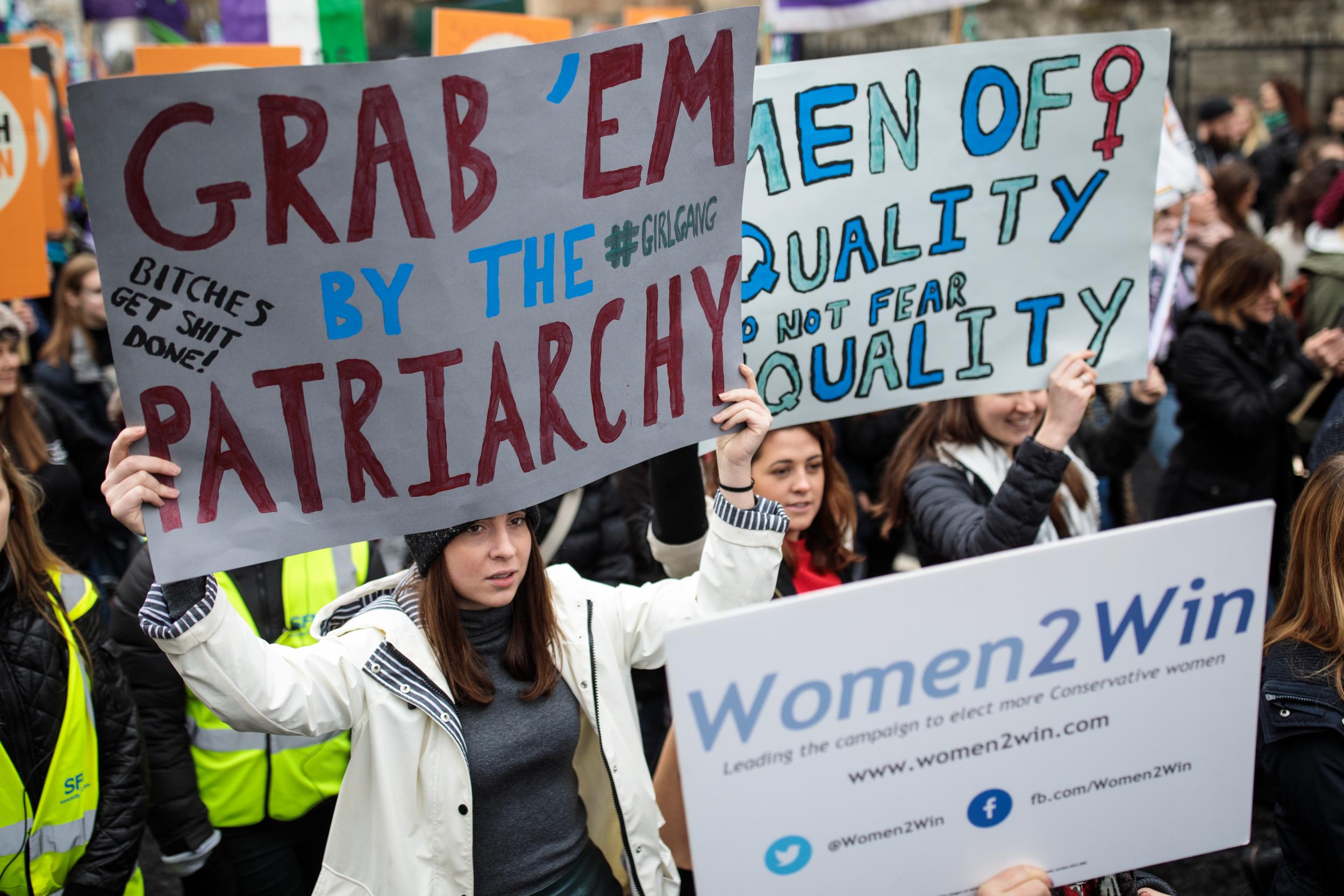
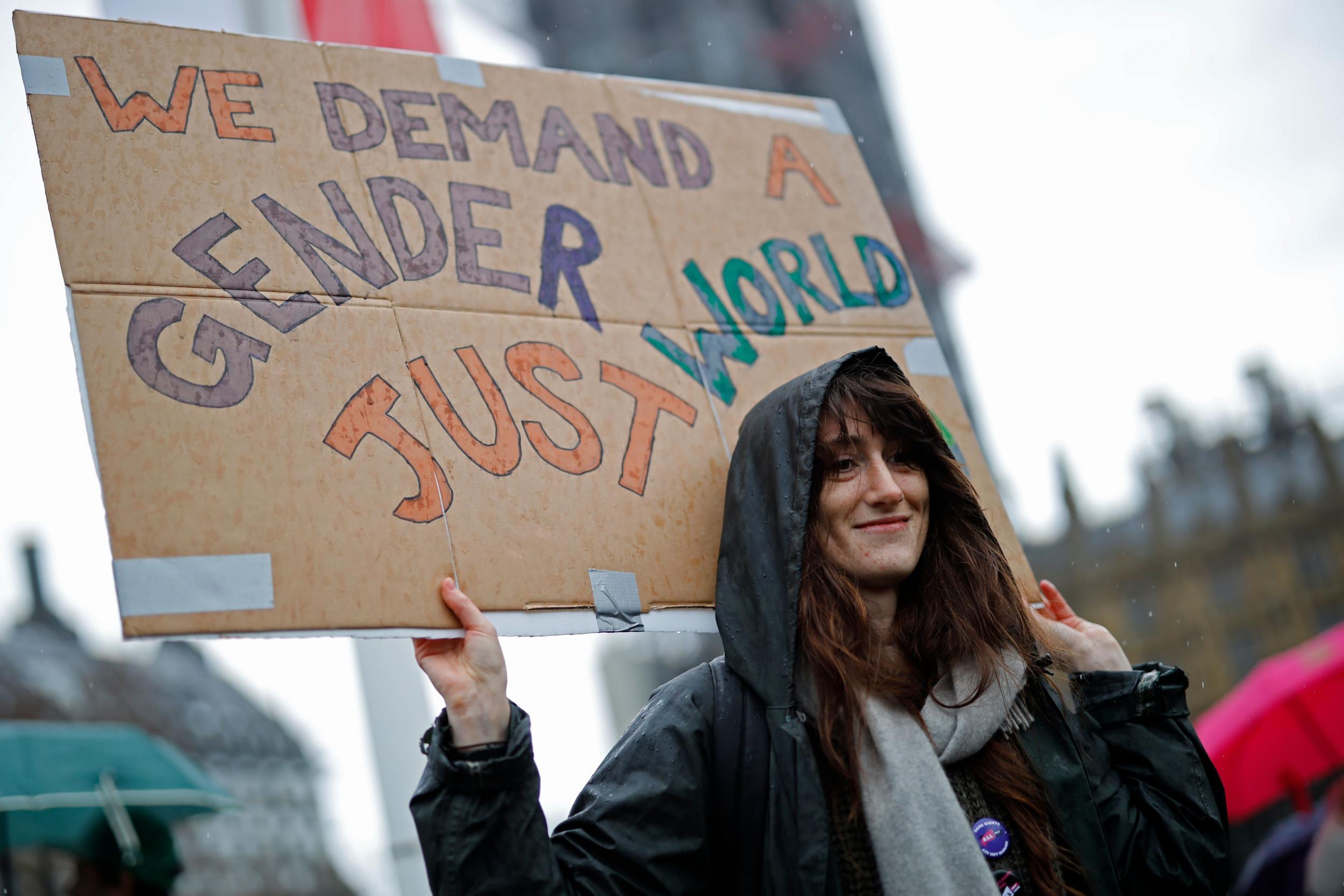
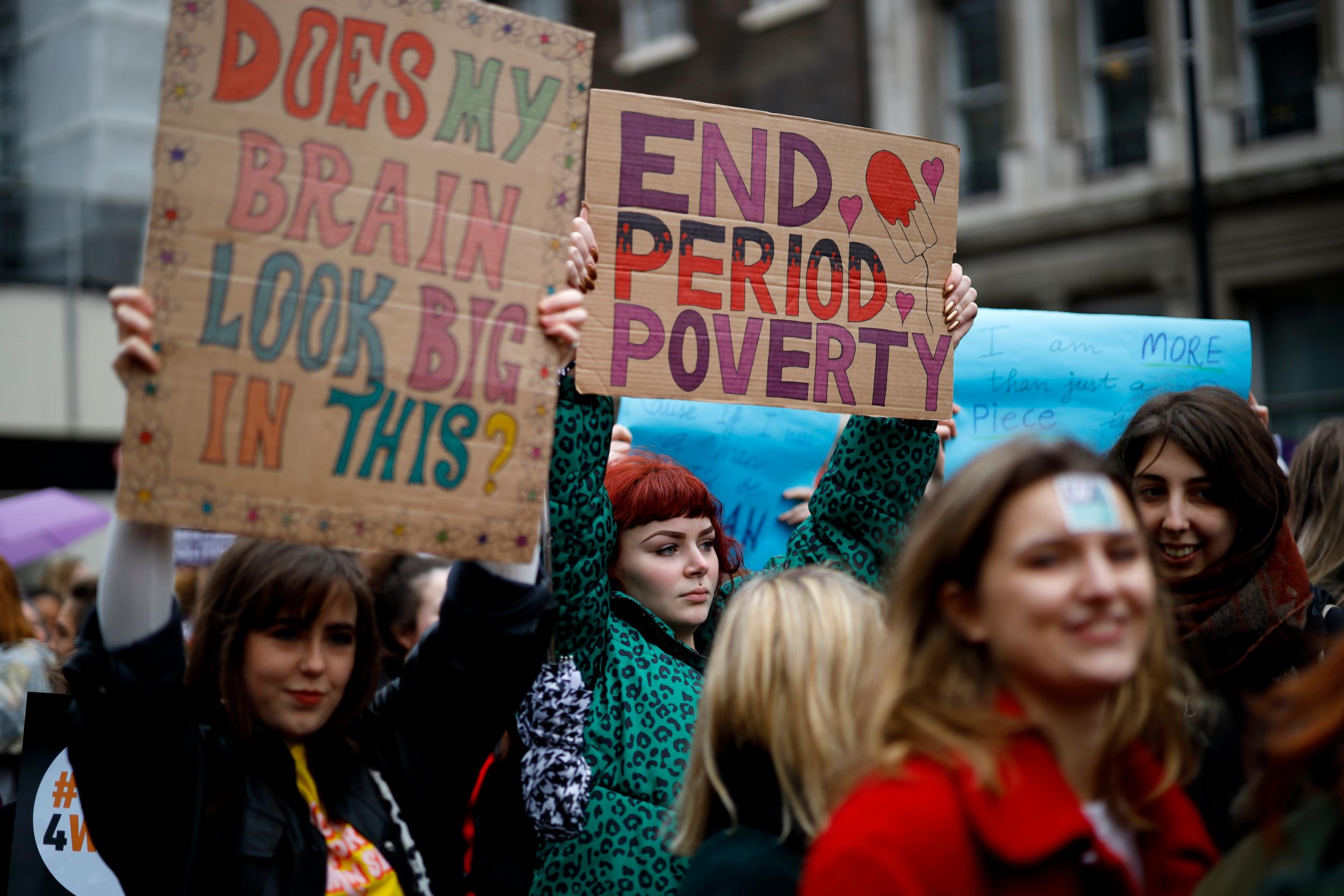
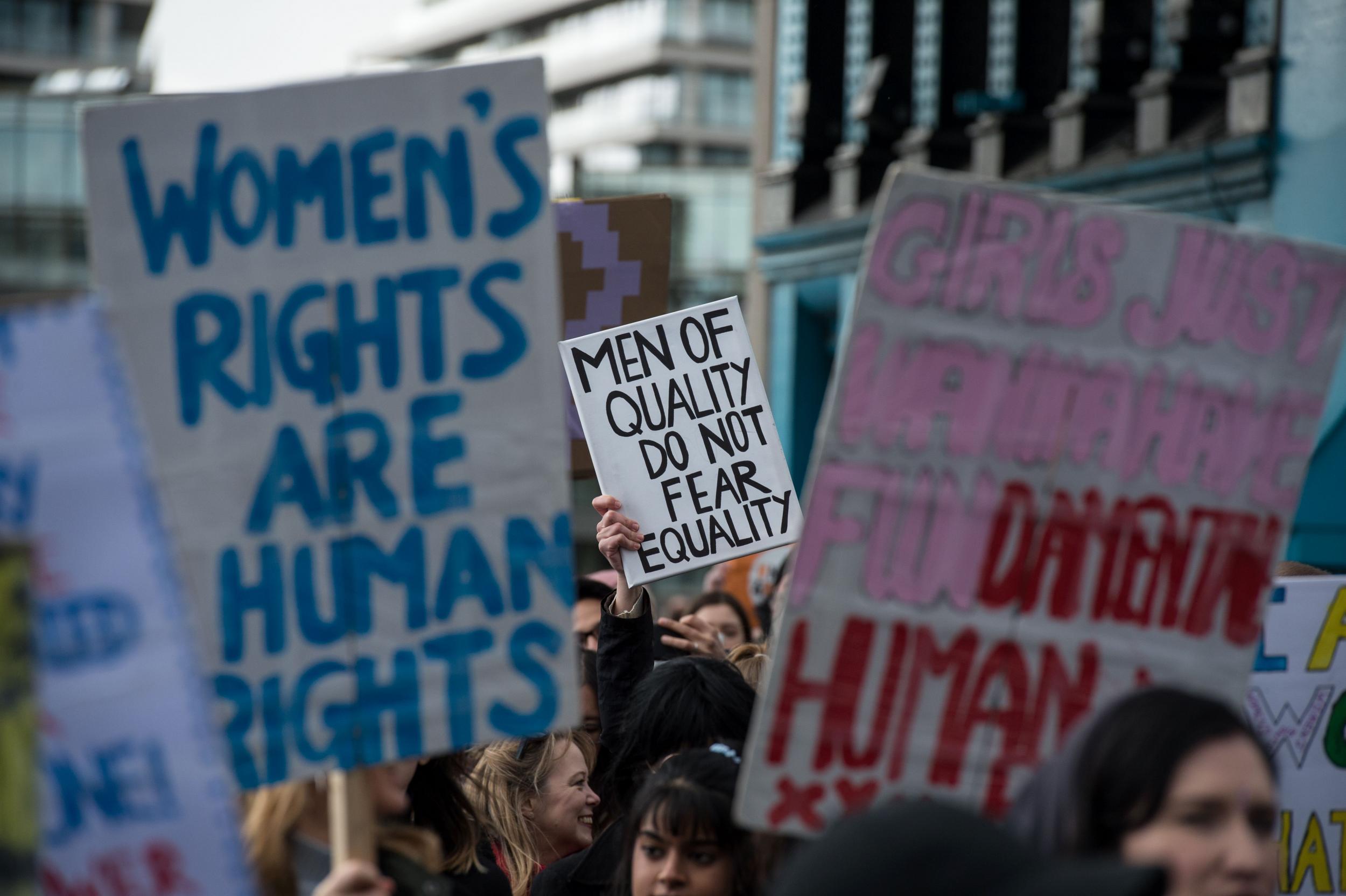
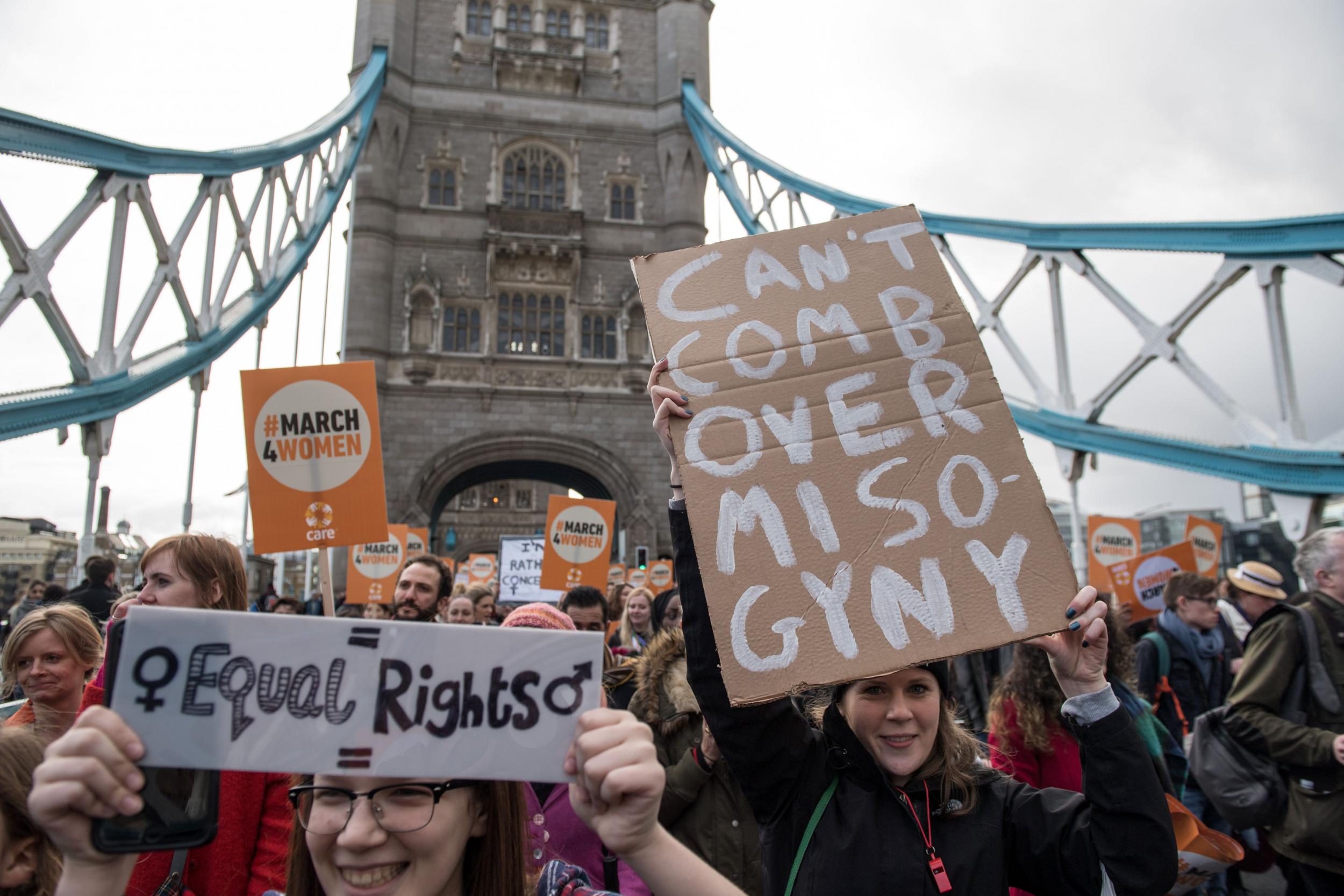
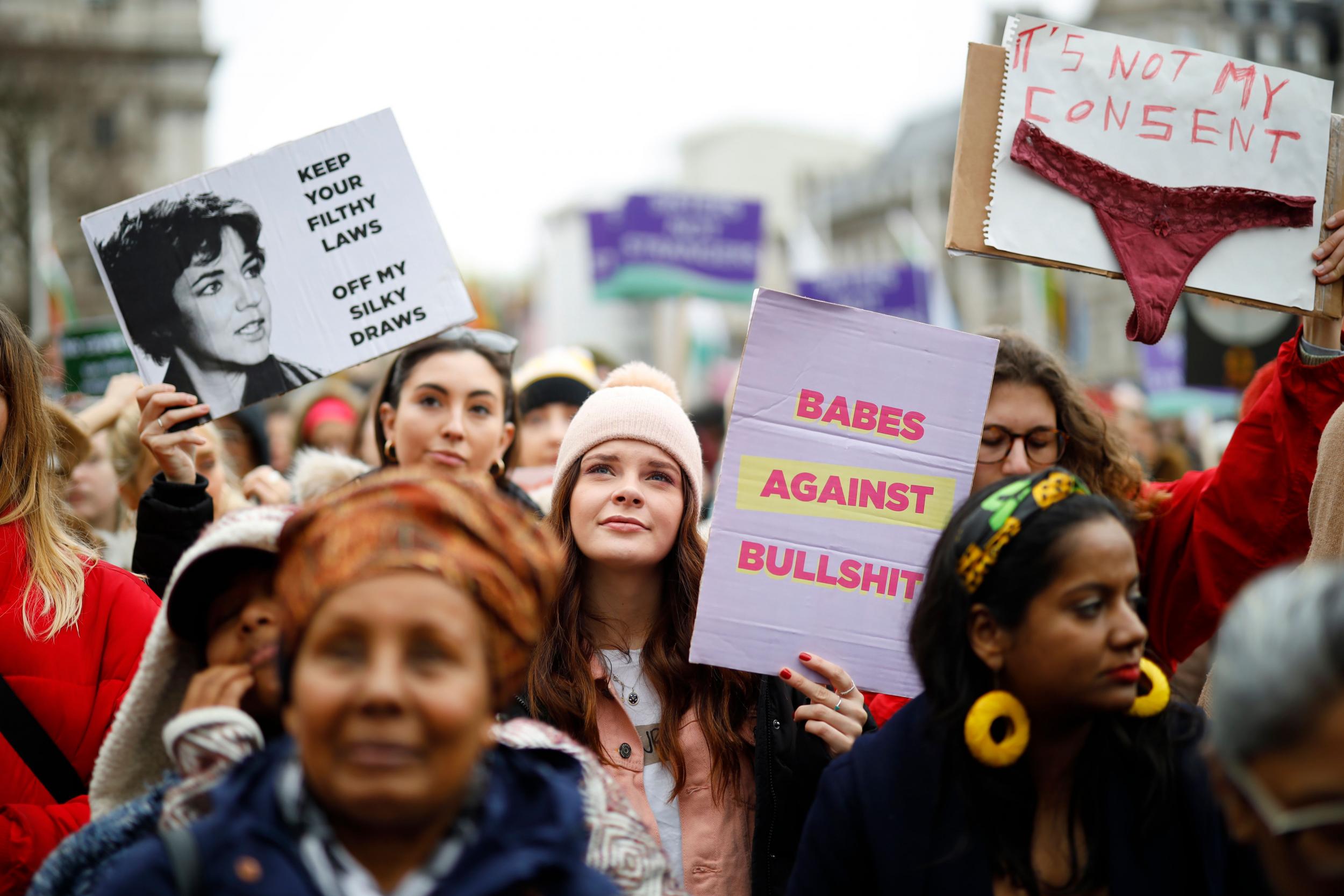
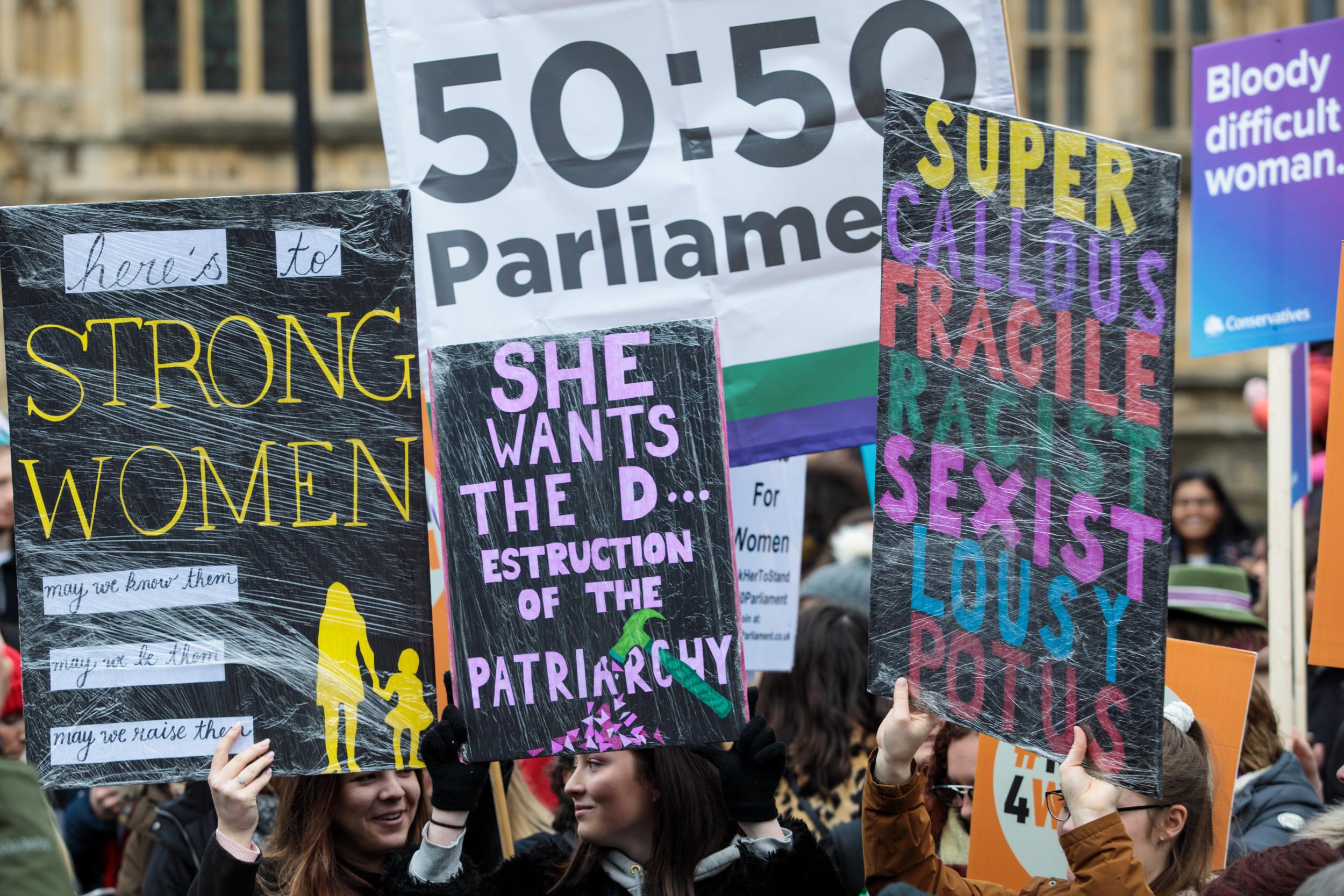
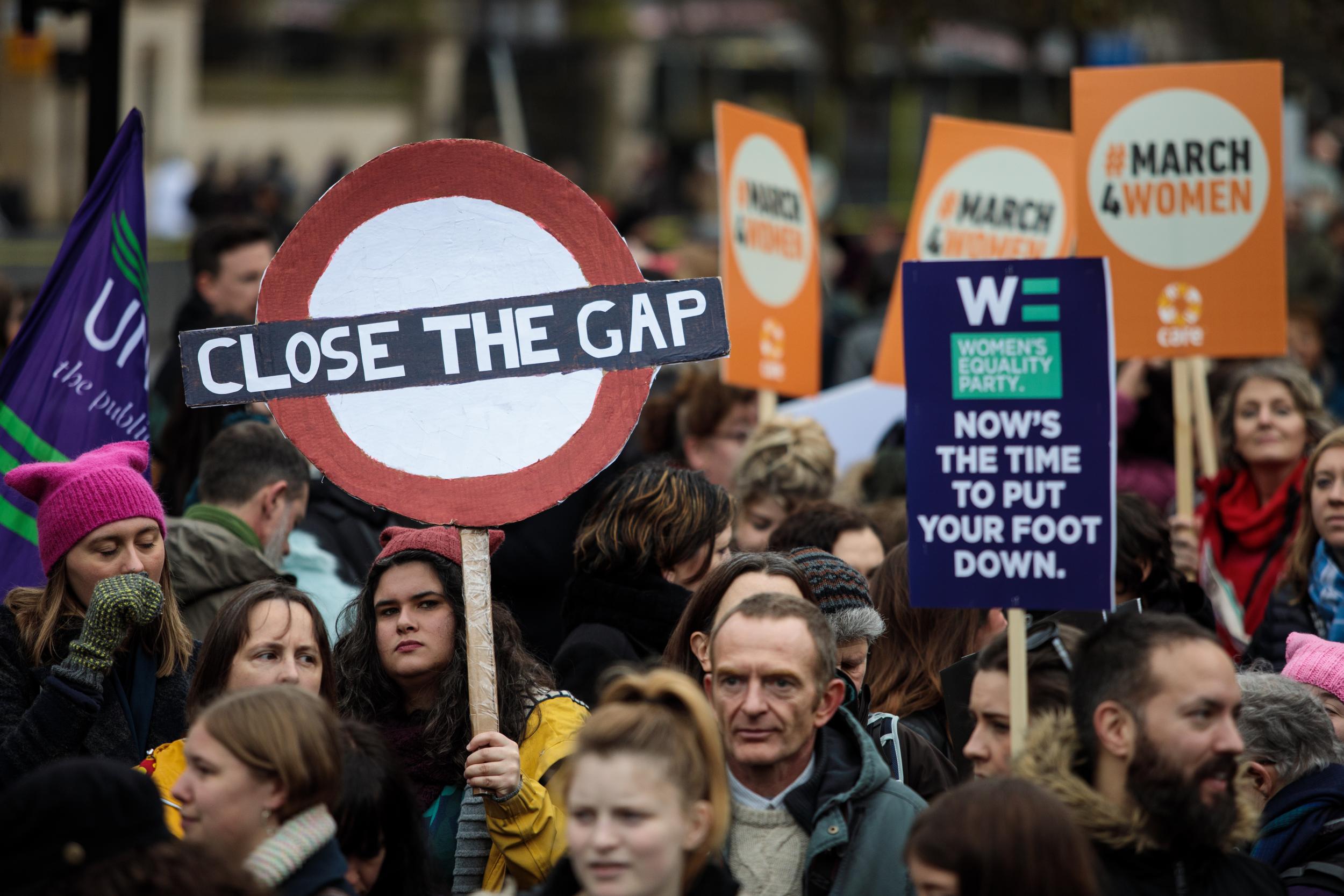
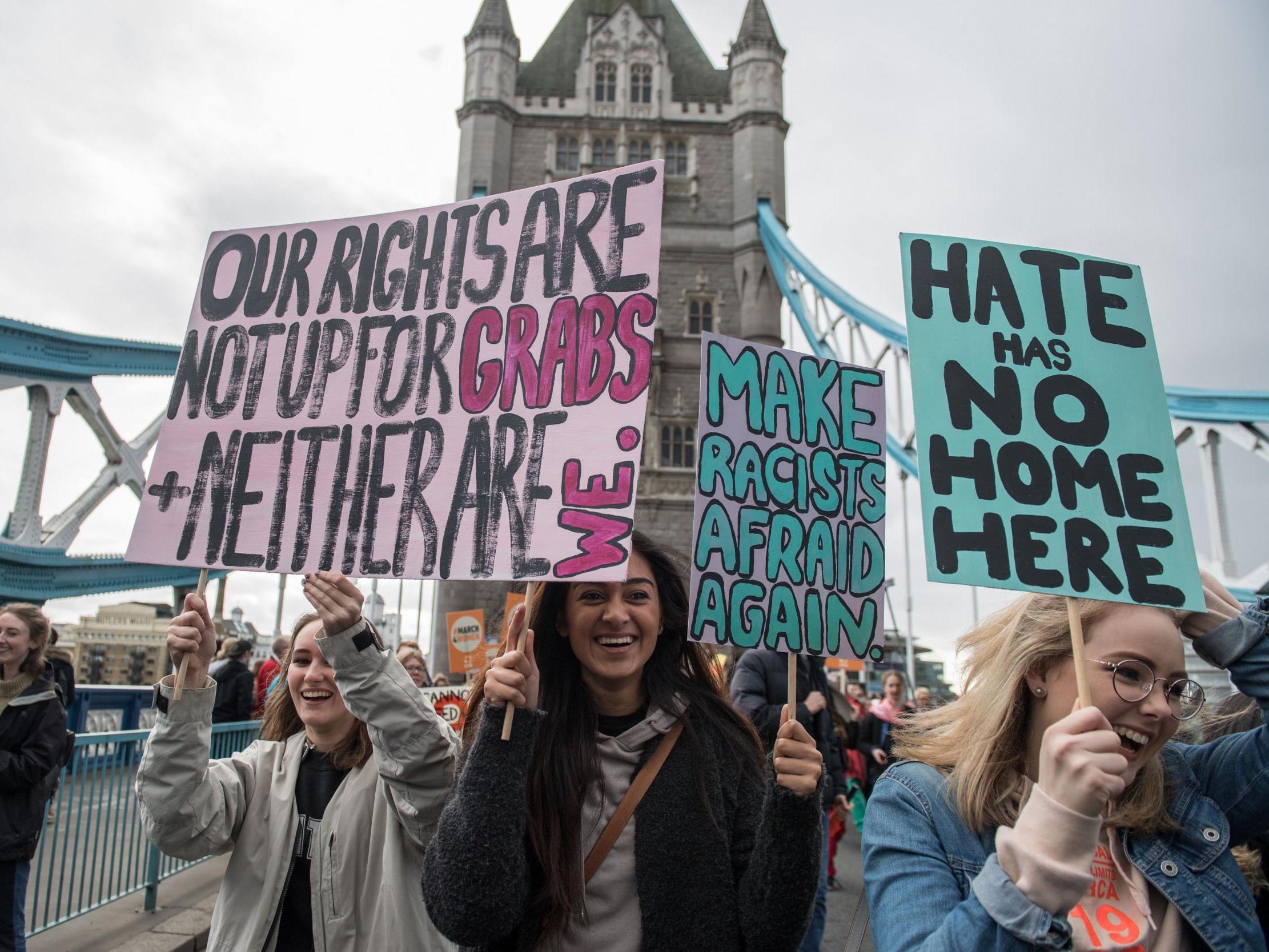
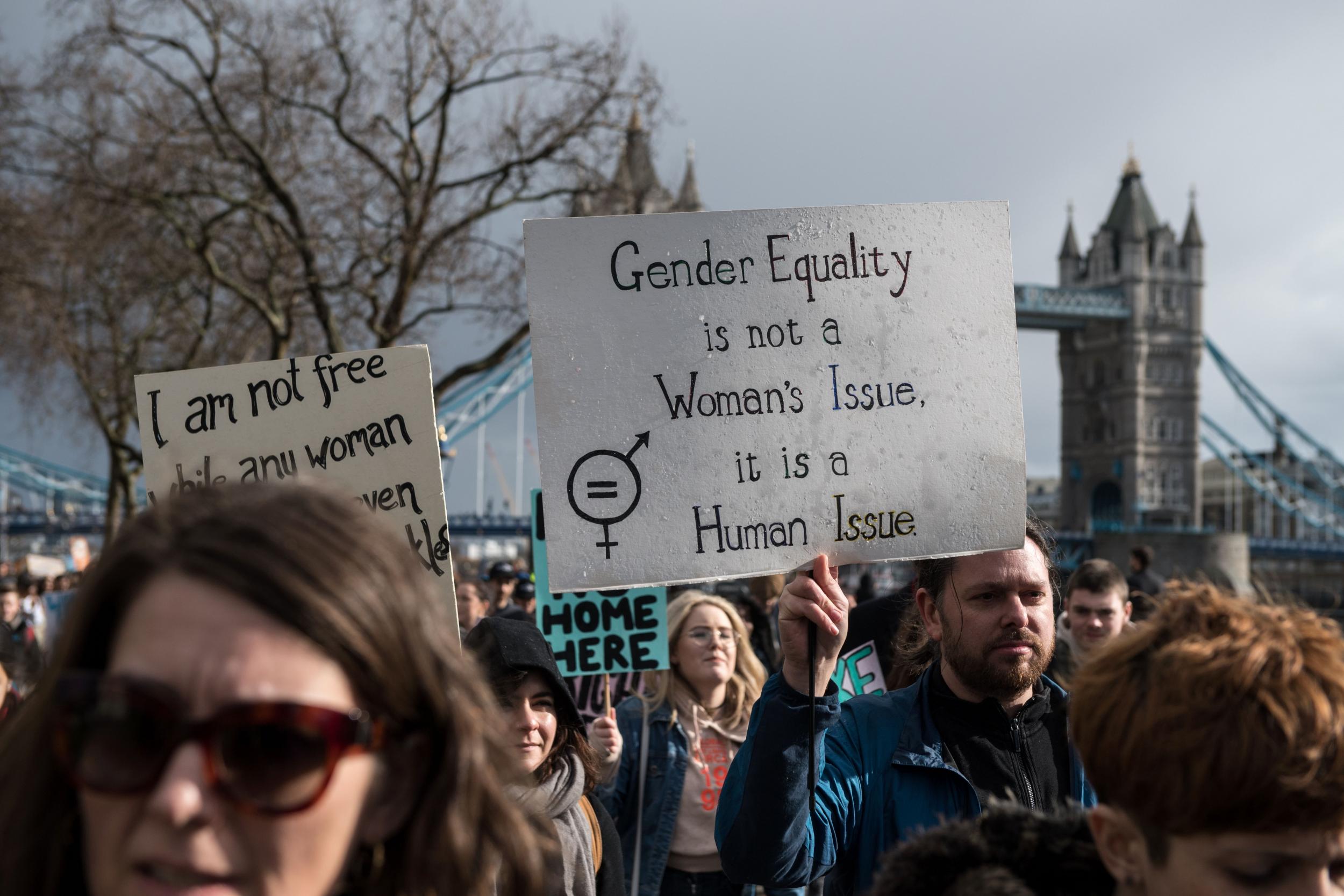
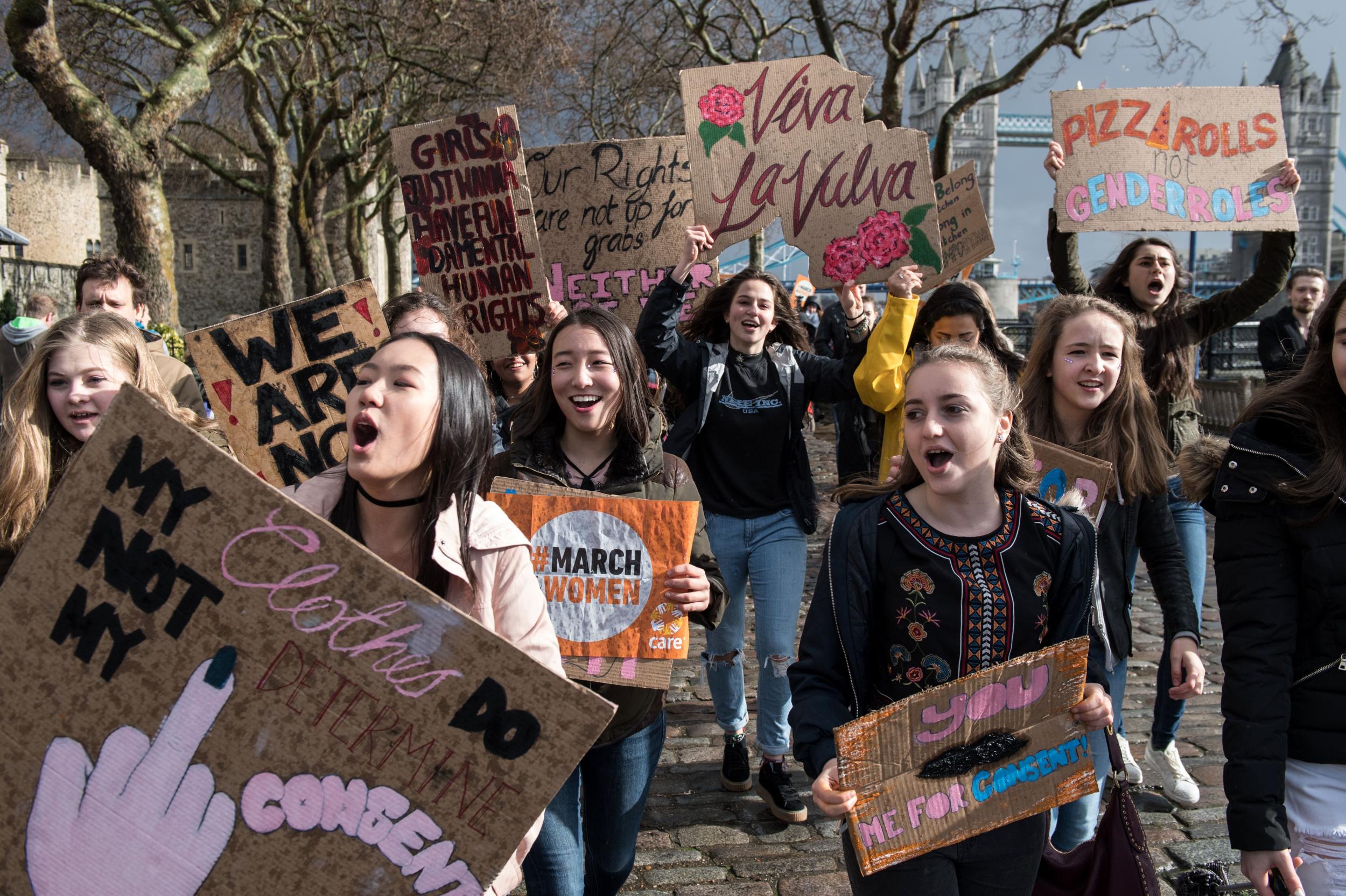
YES THAT IS ANNE LENNOX
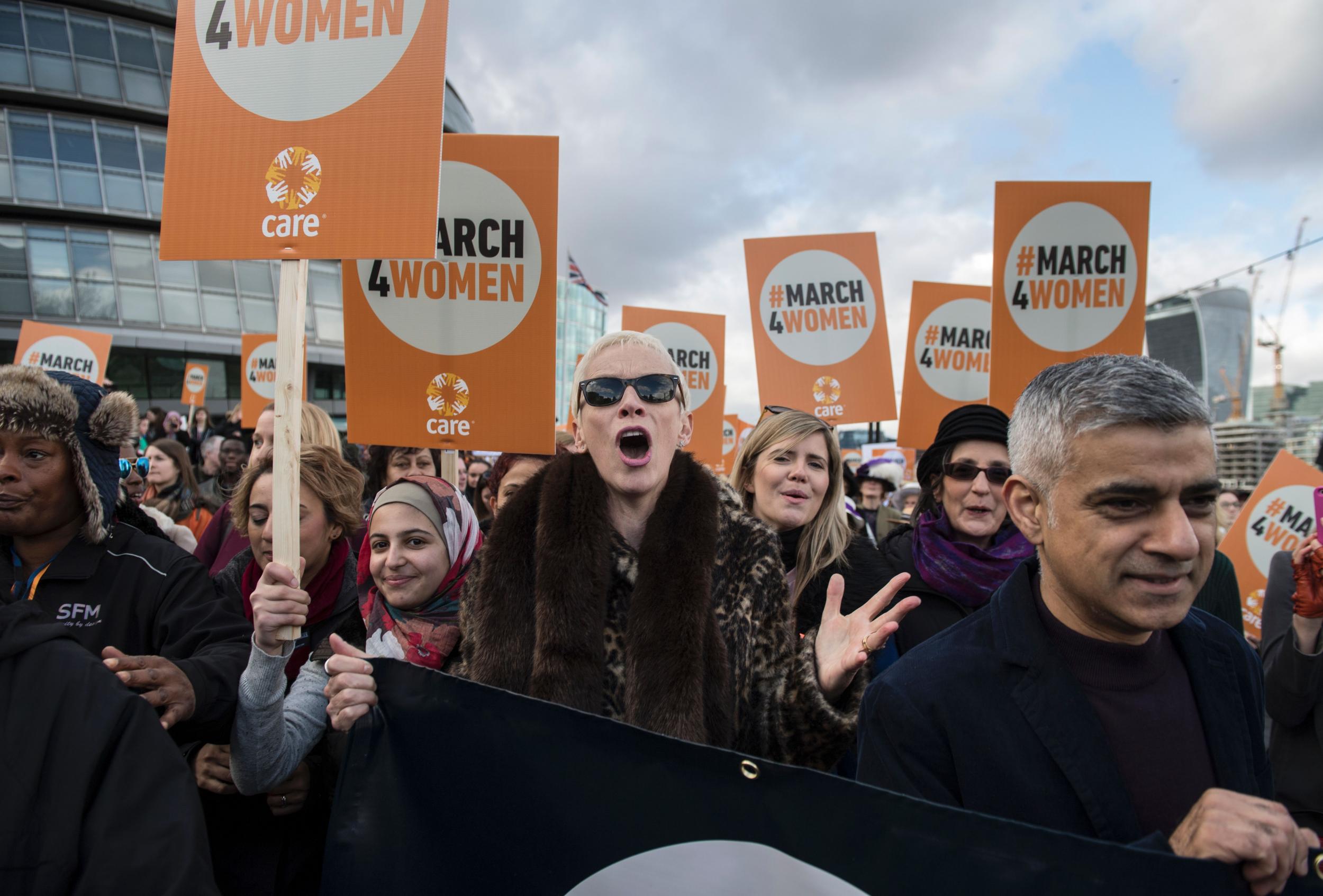
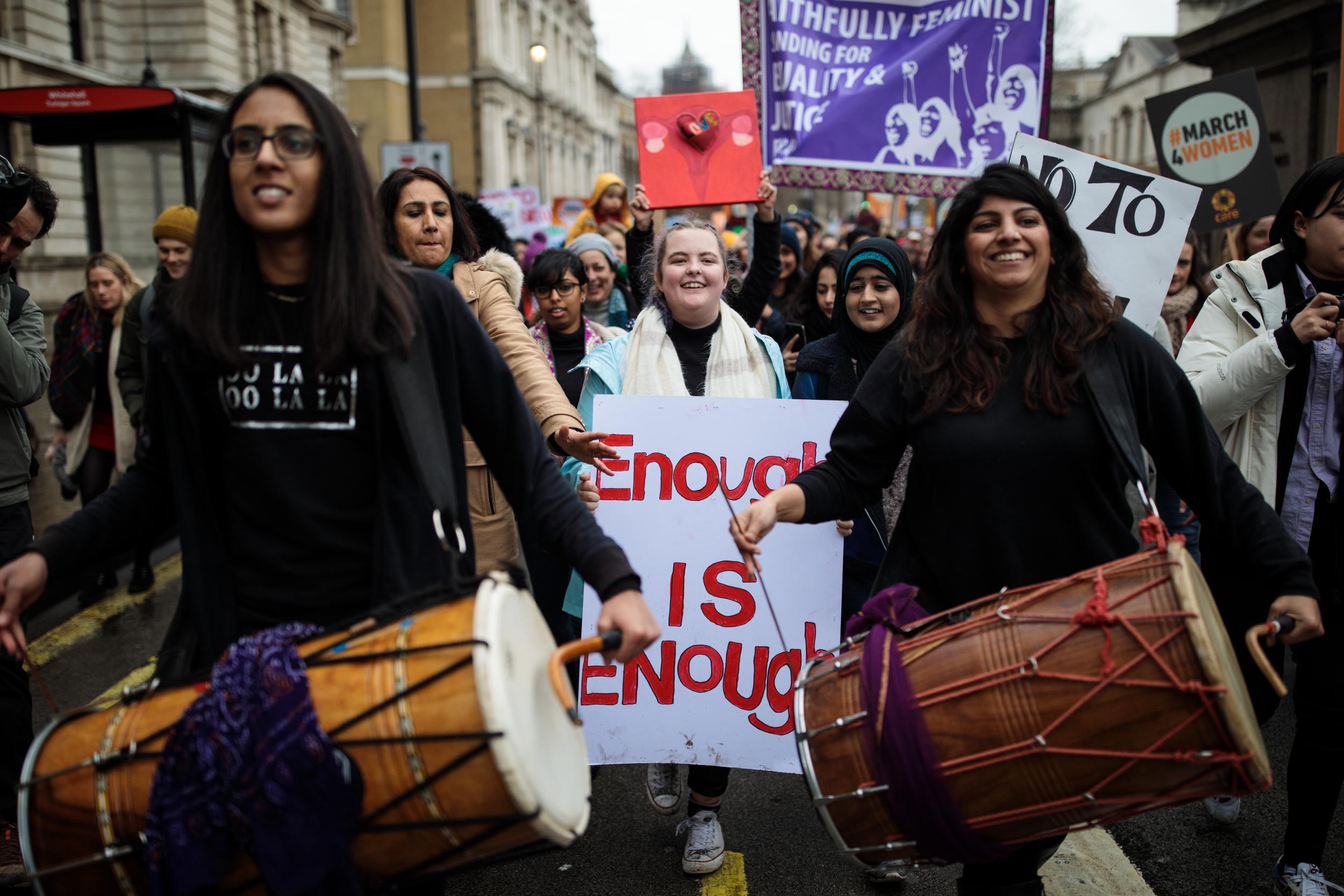
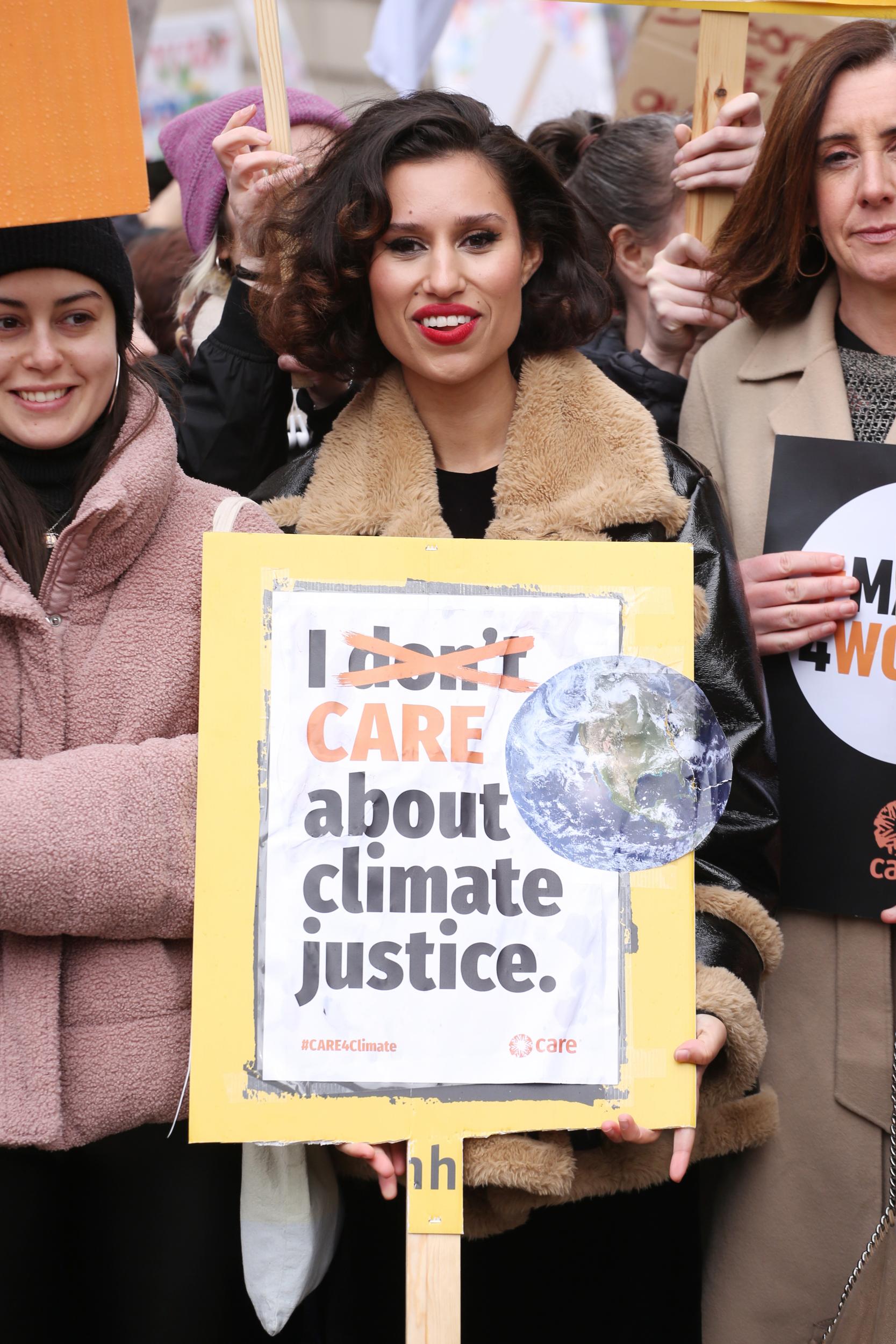
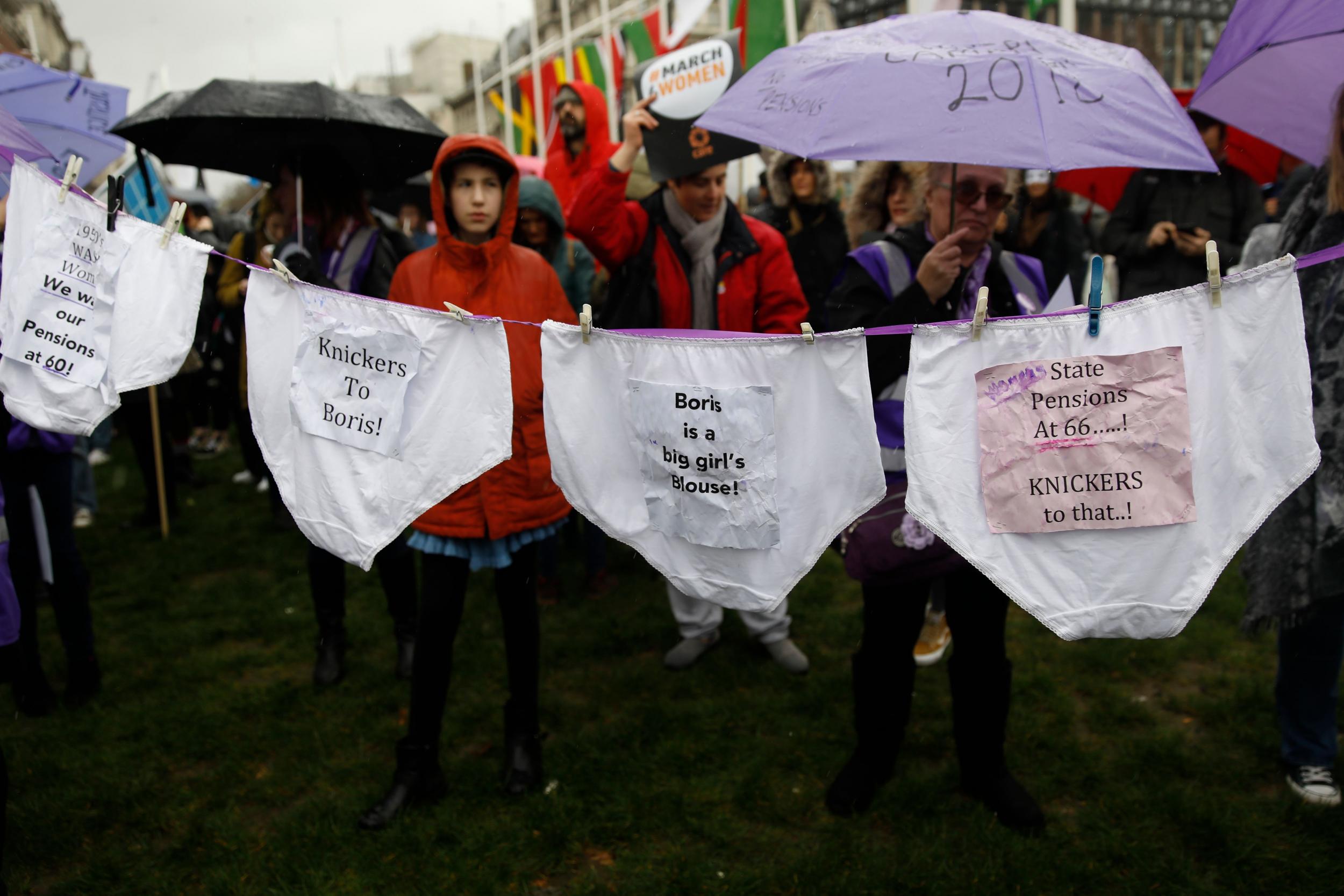
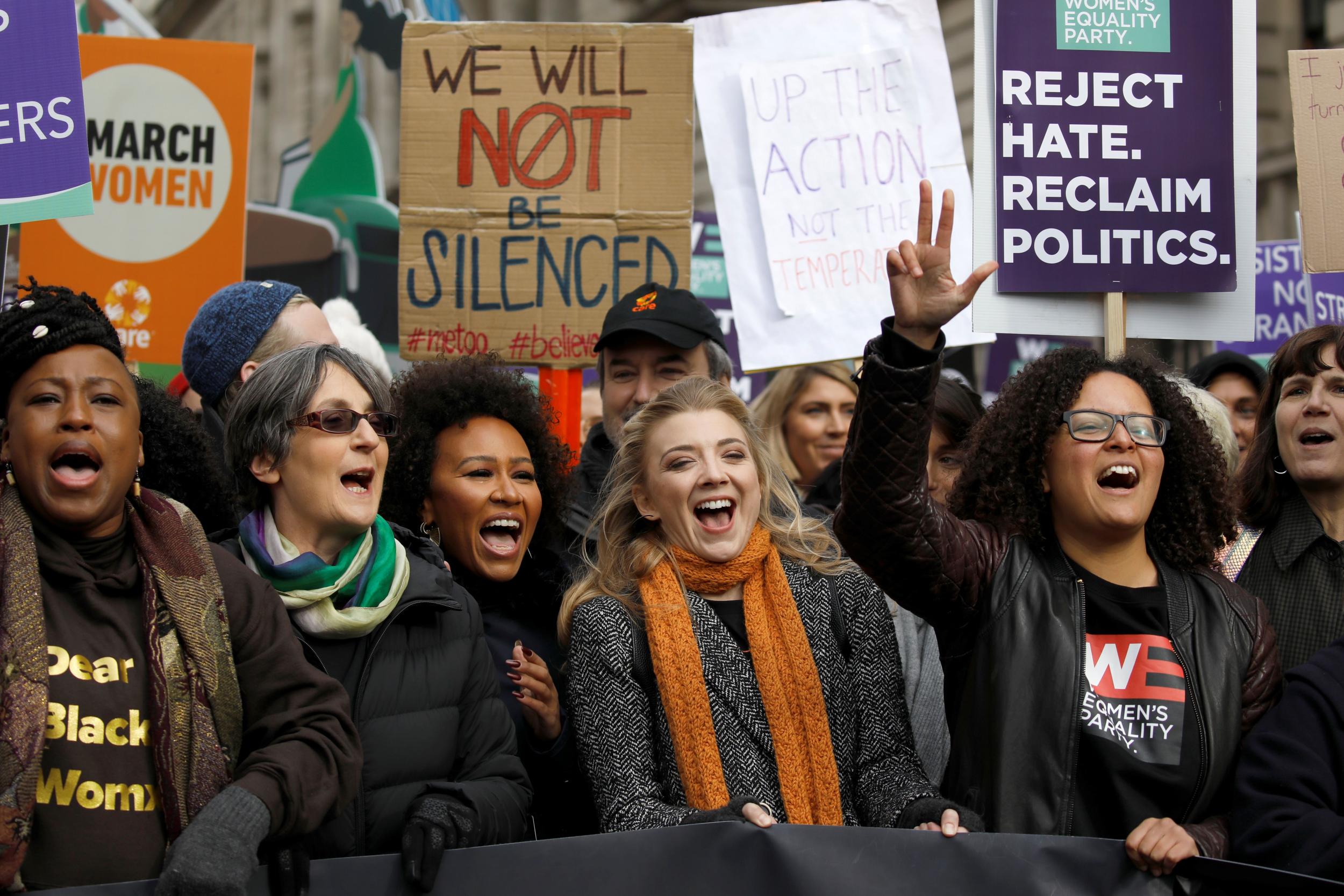
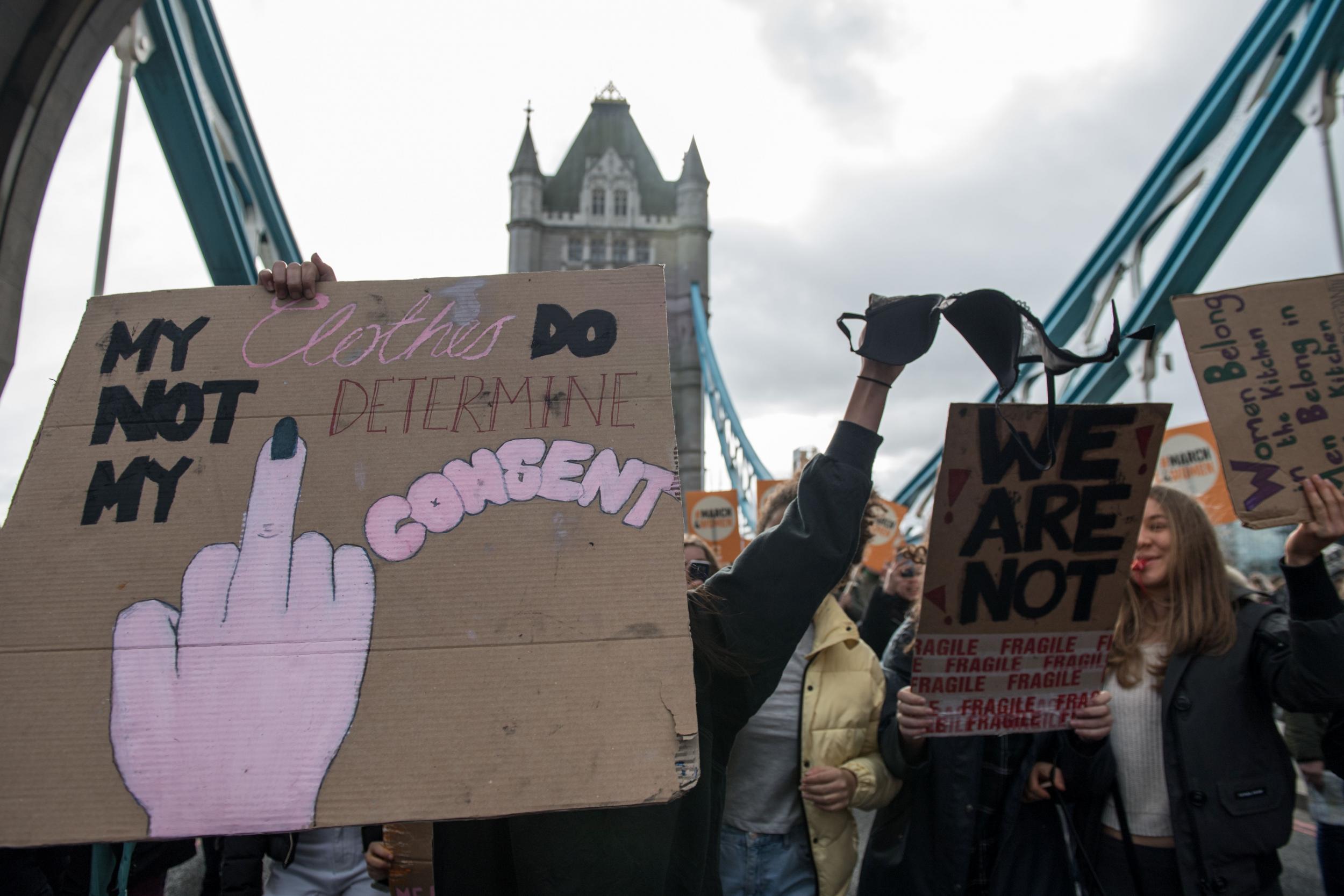
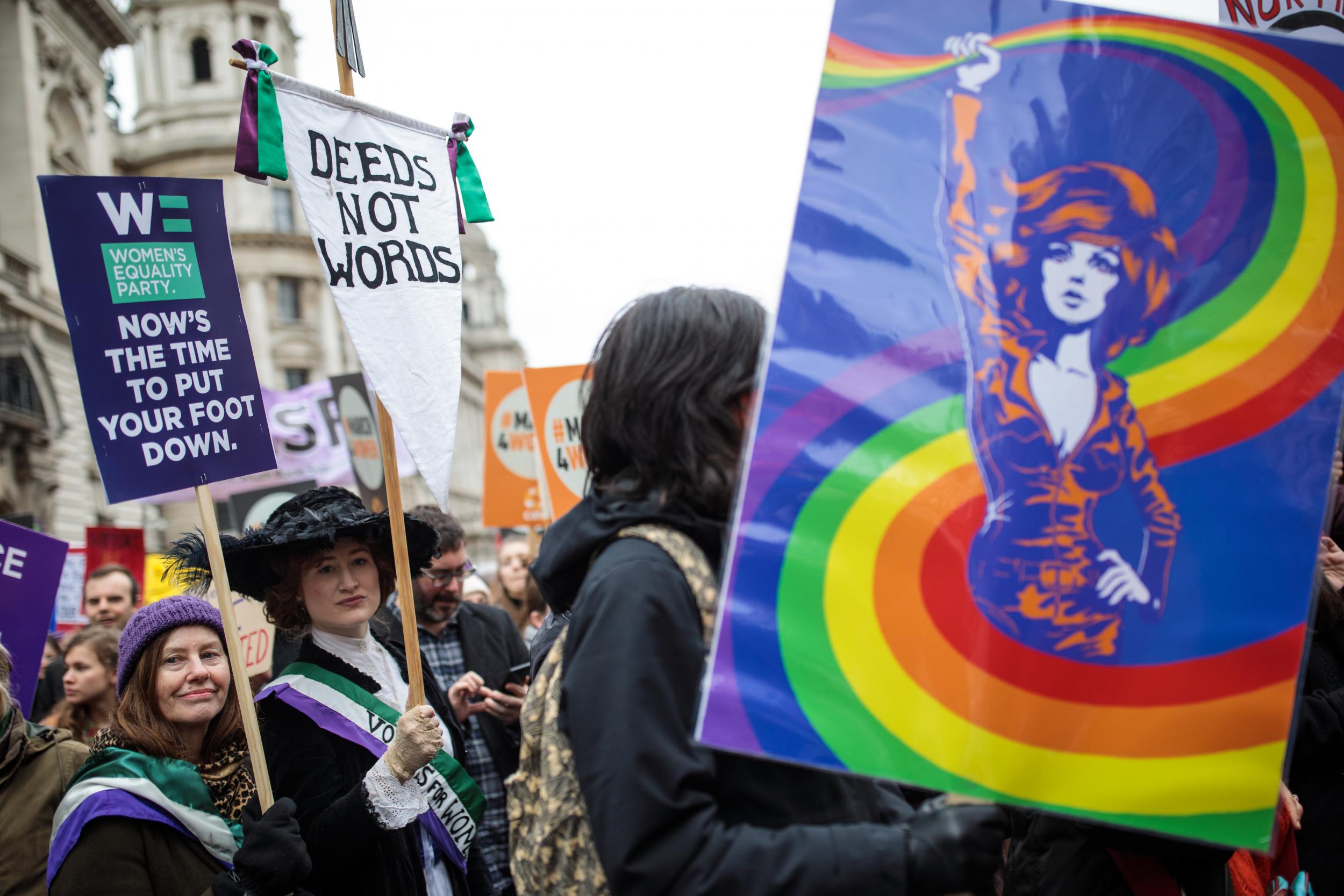
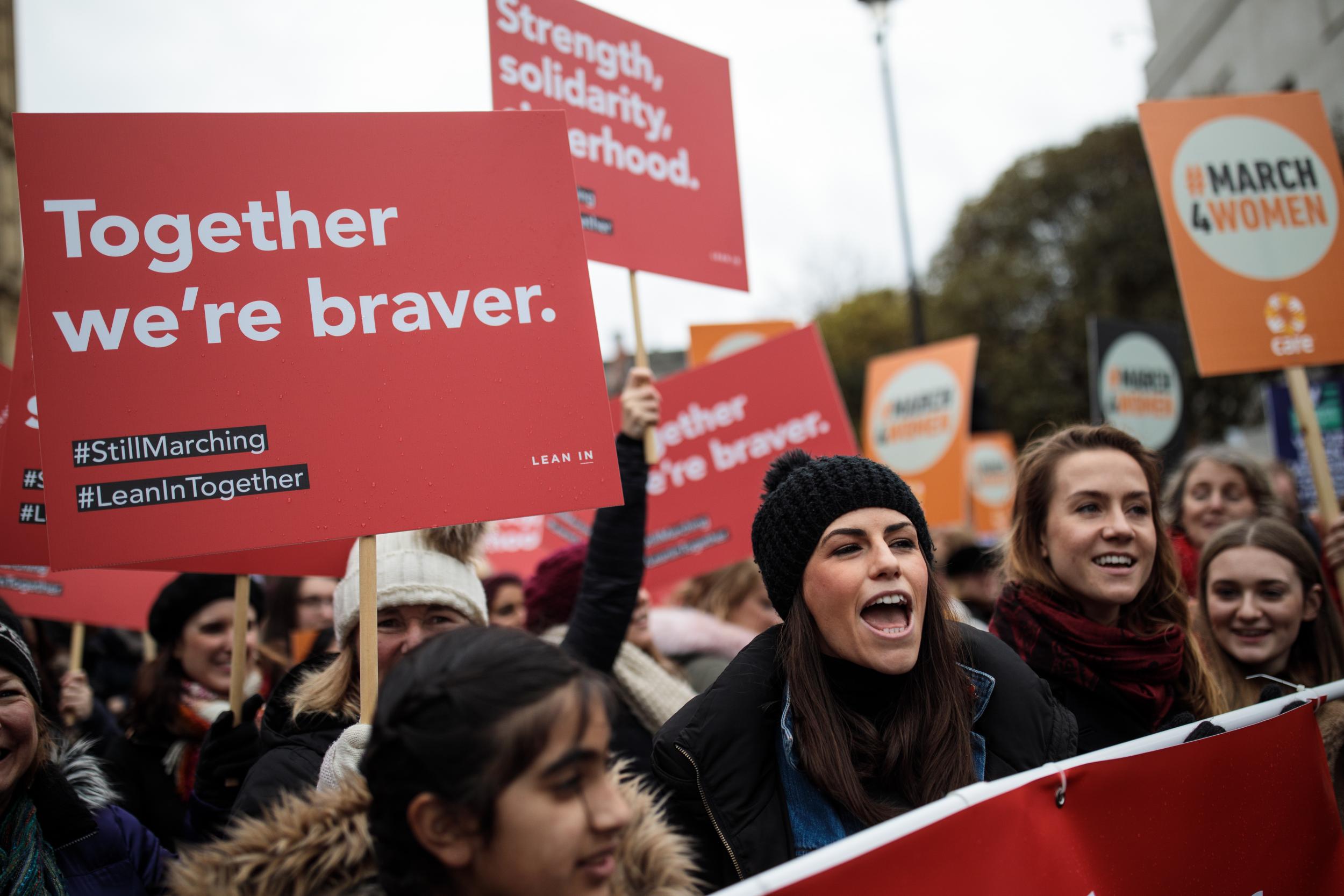
Sarah Young, The Independent•March 8, 2020

AFP via Getty Images
Since 2012, the March4Women rally has become one of the most significant events for championing gender equality and celebrating those who have worked to improve the lives of women and girls across the globe.
This year the rally, organised by the social justice organisation CARE International UK, was dedicated to the power and passion of the women and girls who are responding to the climate crisis and asking what can be done to support the environment.
On Sunday, the event started with an indoor rally at the Southbank Centre in London before the main procession began at Whitehall Place and moved on to Parliament Square.
Thousands of Londoners joined in on the march, including a host of famous faces such as singer Emeli Sande, Ricky Wilson of the Kaiser Chiefs, Game of Thrones star Natalie Dormer and model Lily Cole.
- ADVERTISEMENT -
There were also appearances and speeches from poet Nikita Gill, 1917 star George MacKay, actor Bianca Jagger and women’s rights activist Dr Shola Mos-Shogbamimu.
One of the highlights of the day was marvelling at the empowering messages plastered across the placards held by marchers as they stormed across London.
From demanding equal rights and an end to period poverty to asking “Does my brain look big in this?”, see the best placards from this year’s March4Women by scrolling through the gallery below.
To follow The Independent's live blog on International Women’s Day, click here.
To read more about International Women’s Day, click here.
Since 2012, the March4Women rally has become one of the most significant events for championing gender equality and celebrating those who have worked to improve the lives of women and girls across the globe.
This year the rally, organised by the social justice organisation CARE International UK, was dedicated to the power and passion of the women and girls who are responding to the climate crisis and asking what can be done to support the environment.
On Sunday, the event started with an indoor rally at the Southbank Centre in London before the main procession began at Whitehall Place and moved on to Parliament Square.
Thousands of Londoners joined in on the march, including a host of famous faces such as singer Emeli Sande, Ricky Wilson of the Kaiser Chiefs, Game of Thrones star Natalie Dormer and model Lily Cole.
- ADVERTISEMENT -
There were also appearances and speeches from poet Nikita Gill, 1917 star George MacKay, actor Bianca Jagger and women’s rights activist Dr Shola Mos-Shogbamimu.
One of the highlights of the day was marvelling at the empowering messages plastered across the placards held by marchers as they stormed across London.
From demanding equal rights and an end to period poverty to asking “Does my brain look big in this?”, see the best placards from this year’s March4Women by scrolling through the gallery below.
To follow The Independent's live blog on International Women’s Day, click here.
To read more about International Women’s Day, click here.











YES THAT IS ANNE LENNOX








Most powerful photos as world marks International Women's Day
Alison Millington and Darcy Schild Snapchat

While some celebrations have been impacted by the spread of coronavirus, women around the world are still protesting, parading, and partying.
Here are some of the best and most powerful photos from the day so far.
Protestors demand gender equality in demonstrations outside of Mexico City.

Marchers in London hold signs with messages of gender equality at a "March 4 Women" parade.

Groups of people display feminist hand symbols at a parade in Madrid, Spain.

A woman in a gas mask at a protest in Paris holds a placard that reads: "Patriarchy-virus. We are the antidote."

Women Asylum Seekers, waiting at Turkey's Pazarkule border crossing to reach Europe, stage a demonstration at the buffer zone demanding to open the gate during International Women's Day.

Alison Millington and Darcy Schild Snapchat
REUTERS/Eloisa Lopez
Events are taking place around the globe on Sunday to mark International Women's Day 2020.
Events are taking place around the globe on Sunday to mark International Women's Day 2020.
While some celebrations have been impacted by the spread of coronavirus, women around the world are still protesting, parading, and partying.
Here are some of the best and most powerful photos from the day so far.
Protestors demand gender equality in demonstrations outside of Mexico City.
LUISA GONZALEZ/Reuters
Marchers in London hold signs with messages of gender equality at a "March 4 Women" parade.
TOLGA AKMEN/AFP via Getty Images
Groups of people display feminist hand symbols at a parade in Madrid, Spain.
Pablo Blazquez Dominguez/Getty Images
A participant in Rio de Janeiro holds a sign showing the late Marielle Franco, a Brazilian politician and feminist rights activist.

PILAR OLIVARES/ReutersSource: The New York Times
A woman in a gas mask at a protest in Paris holds a placard that reads: "Patriarchy-virus. We are the antidote."
REUTERS/Pascal Rossignol
Women in Belarus, Minsk take part in a "Beauty Run" race.

Women in Belarus, Minsk take part in a "Beauty Run" race.
REUTERS/Vasily Fedosenko
A woman holds a placard during a protest against women's inequality and sexual violence in Nepal, where International Women's Day is an official holiday for women.

A woman holds a placard during a protest against women's inequality and sexual violence in Nepal, where International Women's Day is an official holiday for women.
Sujan Shrestha/SOPA Images/LightRocket via Getty Images
A young girl holds a rose during an event marking International Women's Day in Kabul, Afghanistan.

A young girl holds a rose during an event marking International Women's Day in Kabul, Afghanistan.
AP Photo/Rahmat Gul
Bangladeshi disabled women playing basketball during a match in Savar on the outskirts of Dhaka on Sunday.

Bangladeshi disabled women playing basketball during a match in Savar on the outskirts of Dhaka on Sunday.
Mehedi Hasan/NurPhoto via Getty Images
A member of the United Russia Young Guard holds a placard reading "You're the World's 8th Wonder" during a march to mark International Women's Day.

A member of the United Russia Young Guard holds a placard reading "You're the World's 8th Wonder" during a march to mark International Women's Day.
Donat Sorokin\TASS via Getty Images
Indonesian people participate in a colourful march in Jakarta on Sunday.

Indonesian people participate in a colourful march in Jakarta on Sunday.
ADEK BERRY/AFP via Getty Images
A man wearing a protective suit carries flowers for female students of the Mechnikov North-Western State Medical University in Saint Petersburg, Russia. The students are under quarantine at the dormitory as part of precautions against the spread of coronavirus after an Italian exchange student who returned to Russia tested positive for the virus.

A man wearing a protective suit carries flowers for female students of the Mechnikov North-Western State Medical University in Saint Petersburg, Russia. The students are under quarantine at the dormitory as part of precautions against the spread of coronavirus after an Italian exchange student who returned to Russia tested positive for the virus.
REUTERS/Anton Vaganov
Femen activists demonstrate at Place de la Concorde in Paris to call for gender equality.

Femen activists demonstrate at Place de la Concorde in Paris to call for gender equality.
MARTIN BUREAU/AFP via Getty Images
A Filipino woman covers her face with a cloth as she joins a flash mob to occupy a street in Manila, Philippines.

A Filipino woman covers her face with a cloth as she joins a flash mob to occupy a street in Manila, Philippines.
REUTERS/Eloisa Lopez
Women Asylum Seekers, waiting at Turkey's Pazarkule border crossing to reach Europe, stage a demonstration at the buffer zone demanding to open the gate during International Women's Day.
Elif Ozturk/Anadolu Agency via Getty Images
Kyrgyz law enforcement officers detain a women's rights activist during a rally in Bishkek, Kyrgyzstan.

Kyrgyz law enforcement officers detain a women's rights activist during a rally in Bishkek, Kyrgyzstan.
REUTERS/Vladimir Pirogov
Flowers are presented to participants of a 400m race held on Moscow's Pushkinskaya Embankment to mark International Women's Day.

Flowers are presented to participants of a 400m race held on Moscow's Pushkinskaya Embankment to mark International Women's Day.
Anton Novoderezhkin\TASS via Getty Image
Filipino women exchange flowers during a protest in Manila, Philippines.

Filipino women exchange flowers during a protest in Manila, Philippines.
REUTERS/Eloisa Lopez
Women bang pots and pans while protesting in Sol Square, Madrid to mark the start of International Women's Day.

Women bang pots and pans while protesting in Sol Square, Madrid to mark the start of International Women's Day.
Subscribe to:
Comments (Atom)

